You’ve probably heard of major sites in the French Alps without knowing they were located in the Tarentaise Valley. If I tell you about La Plagne, Les Arcs, Tignes, Val d’Isère or Courchevel, do they ring a bell? These world-famous ski resorts are all located in the Tarentaise Valley in the département of Savoie, where the Isère River flows. Follow me on a discovery journey along the Tarentaise from Albertville to the Iseran Pass.
The Tarentaise Valley in Savoie
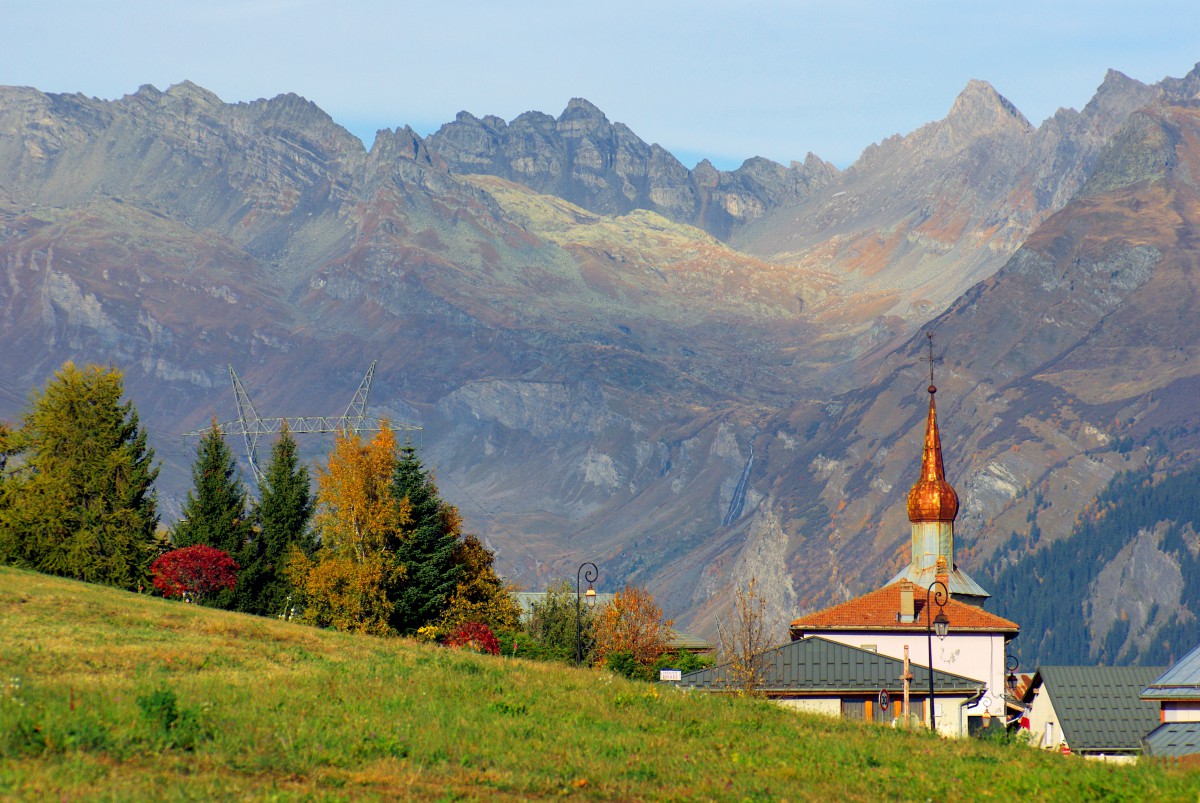
The Tarentaise Valley is situated in the département of Savoie, which holds the number 73 in the alphabetical list of French départements. It is part of the historical duchy of Savoy. The Tarentaise was one of the six provinces of Savoy. Its name derives from Darantasia. This was the Gallo-Roman name of its former capital, Moûtiers. In all times, the Tarentaise was a passageway towards Italy via the Little St Bernard Pass: travellers, traders, pilgrims, new ideas and armies. In the Roman era, three cities developed along the historic road: Moûtiers, Aime and Bourg-Saint-Maurice.
The River Isère flows down the valley from the vicinity of the Iseran Pass (Col de l’Iseran) to Albertville. From there, the river enters a large valley (Combe de Savoie) toward Montmélian, which heads South towards Grenoble.
The valley is divided into three geographic sections:
- La Basse Tarentaise (Lower Tarentaise) – from Albertville to Moûtiers
- La Moyenne Tarentaise (Middle Tarentaise) – from Moûtiers to Bourg-Saint-Maurice
- La Haute Tarentaise (Upper Tarentaise) – from Bourg-Saint-Maurice to the Iseran Pass
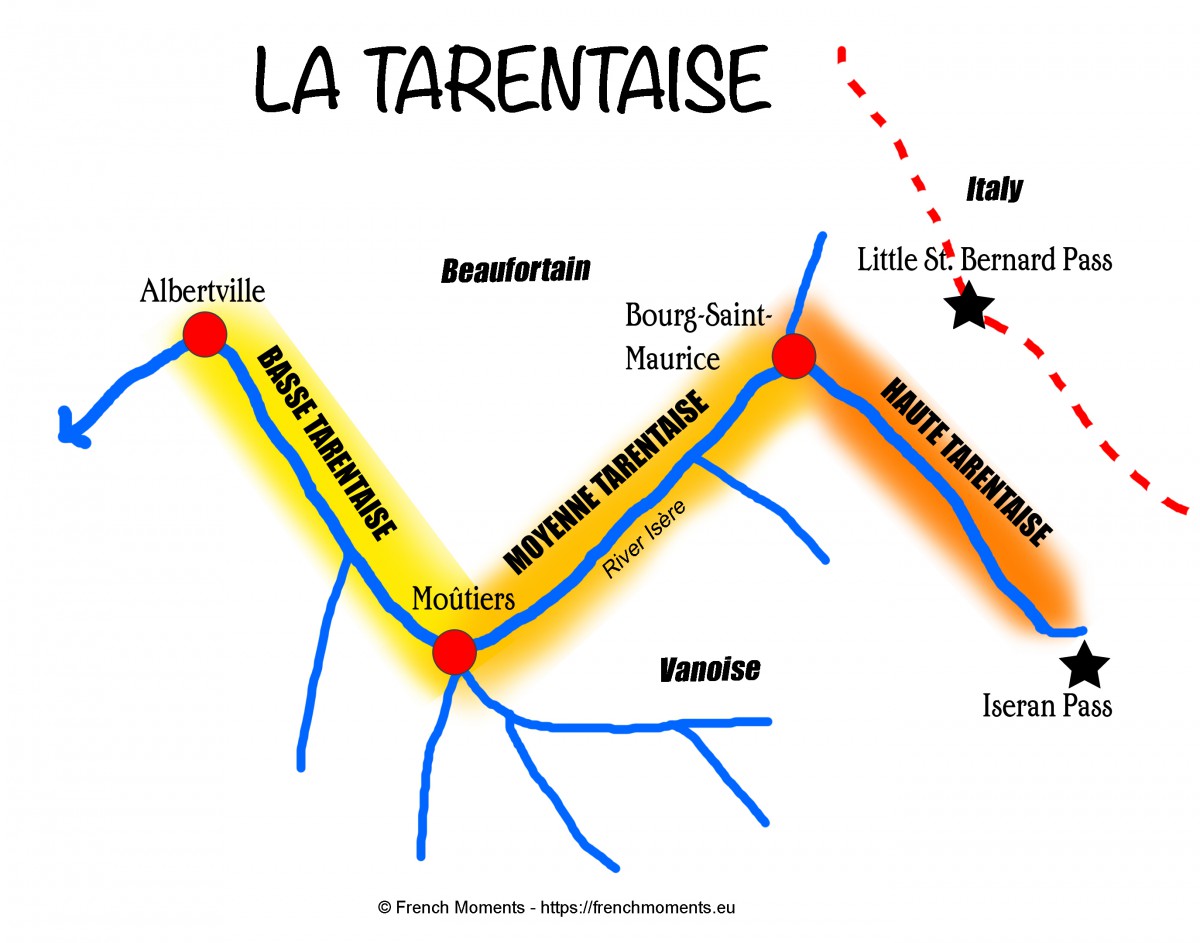
The Tarentaise province is limited in the north by the Beaufortain massif, in the east by the Aosta Valley (Italy) and in the south by the Vanoise massif.
The road between Albertville and the source of the Isère River near the Iseran Pass involves a 180 km-long journey.
Albertville and the Lower Tarentaise
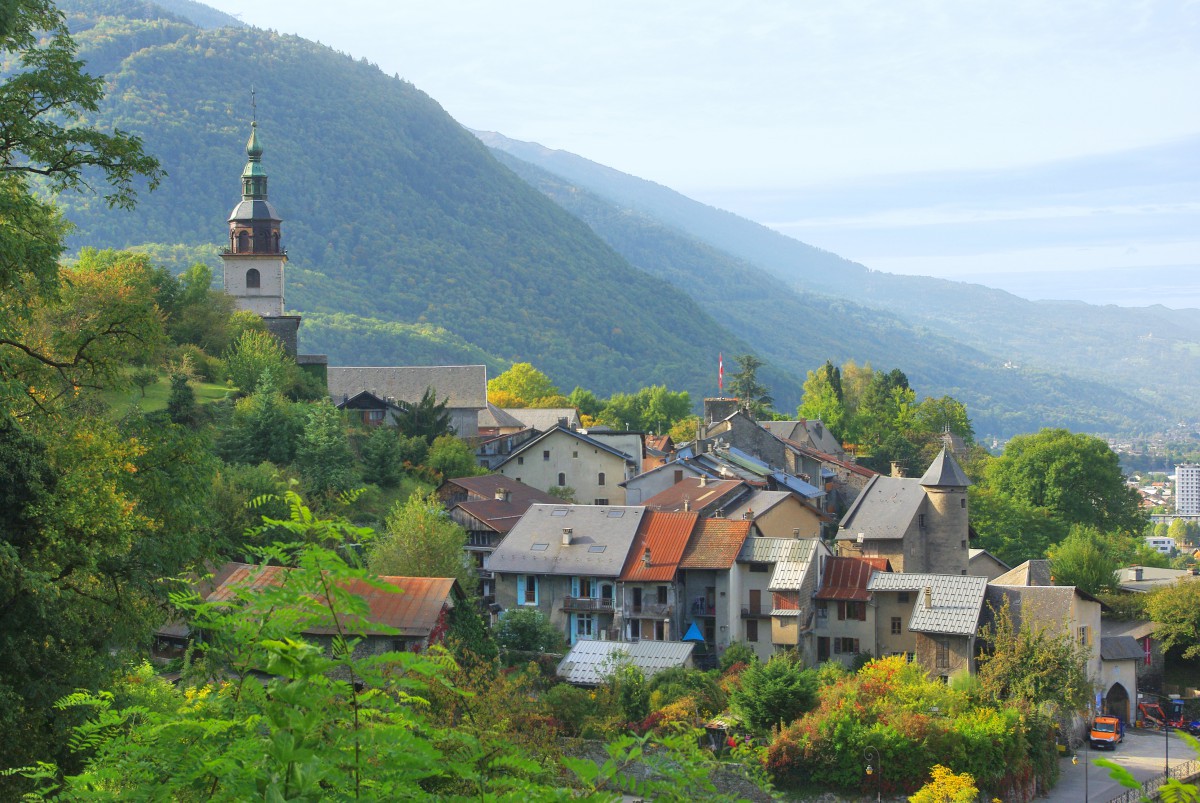
The Tarentaise Valley starts at Albertville, the host city of the 1992 Winter Olympic Games. Most sporting activities and competitions occurred in ski resorts across the Tarentaise Valley. For this, France invested massively into building new expressways and communication networks that we still enjoy today. For example, a dual carriageway links Albertville to Moûtiers, making it a lot faster (and easier) to reach the world’s largest ski resorts than before.
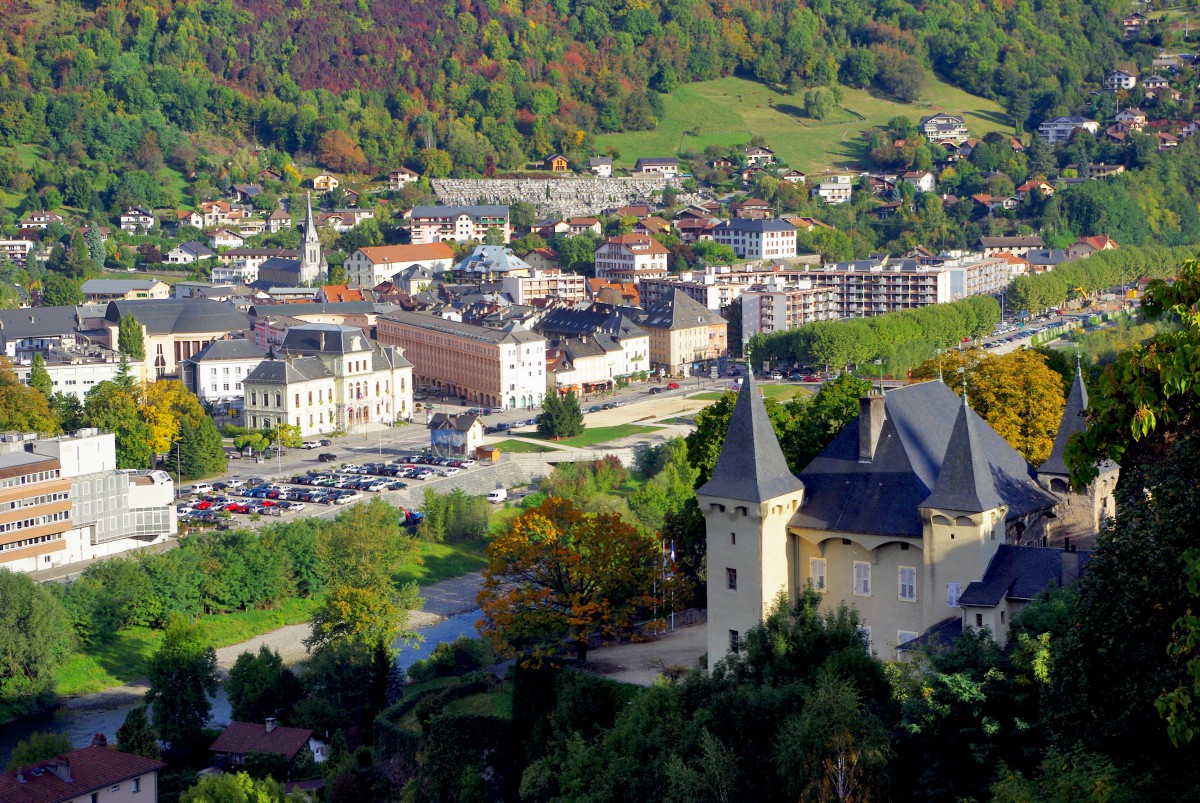
If you find not many exciting things to discover in the centre of Albertville, don’t miss the perched medieval village of Conflans that watches over the city. The ideal position of the historic town of Conflans – where the Tarentaise Valley and the Combe de Savoie meet – made it an important and strategic place.
This is where Lower Tarentaise ends. From Albertville to Moûtiers, you may not be impressed by the landscape occupied by urban and commercial zones, industries, and electric plants…
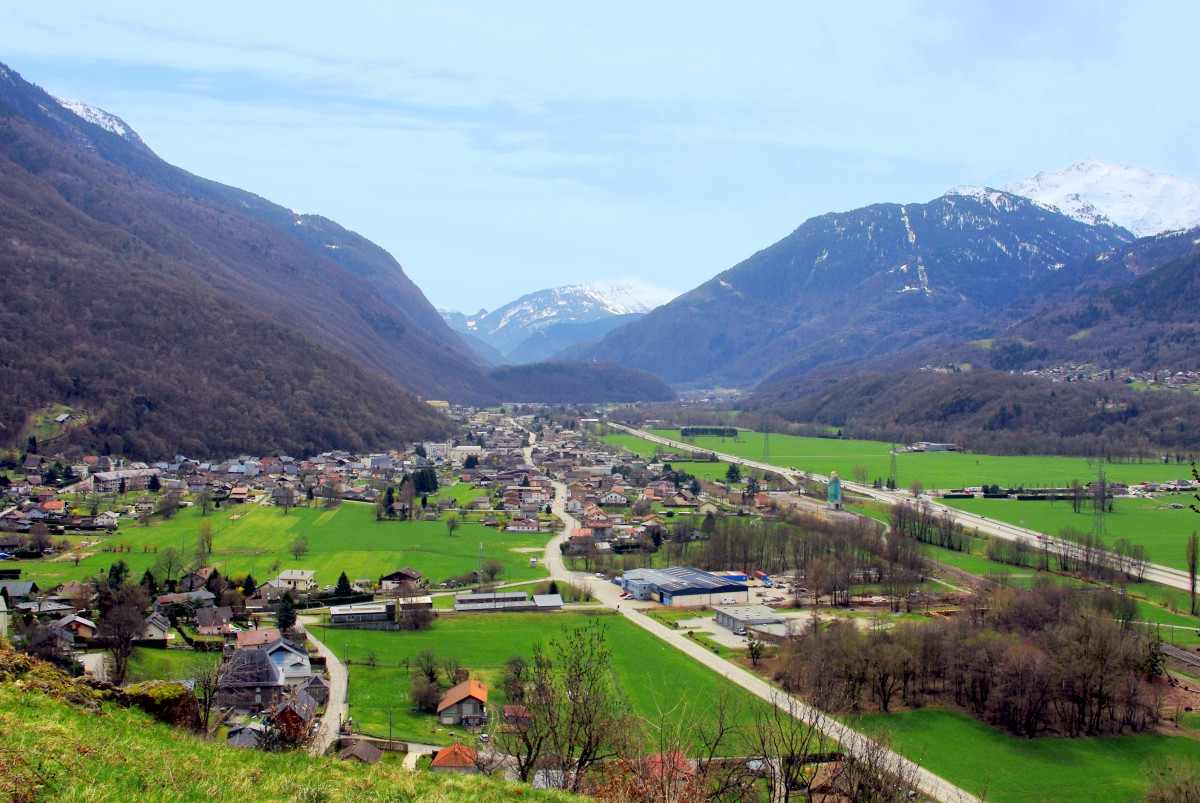
It would be best if you drove out from the busy N90 to appreciate better the little treasures of this part of the valley: a few churches hiding baroque interiors, the small vineyard of Cevins, and the fantastic ruins of a medieval castle.
The Chantemerle castle is perched on a rocky crest above the village of La Bâthie. It was built at the end of the 12th century, and its ruins feature a circular keep and a defensive square tower.
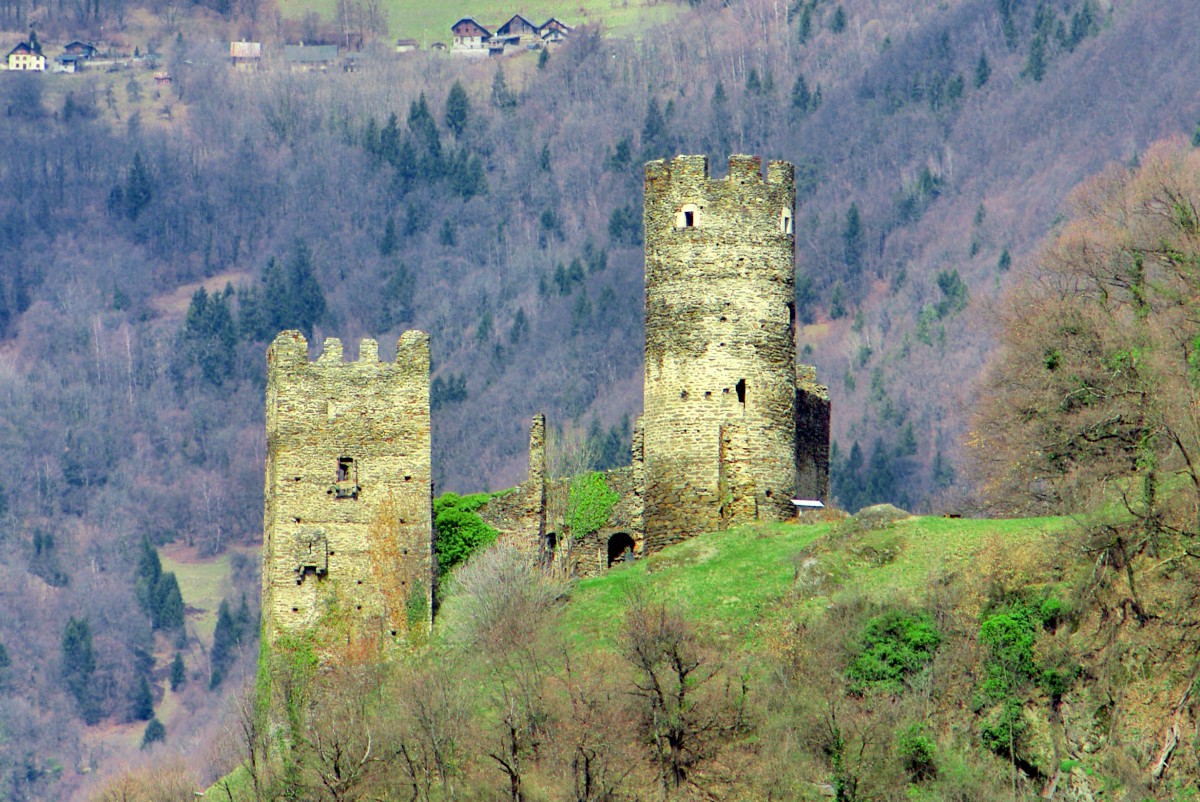
Other ruins are found further away, nearer to Moûtiers. The Feissons castle was built above the village of Feissons-sur-Isère. The keep dates back to the 13th century, and the corps de logis from 1536.

Between La Léchère and Moûtiers, the valley dramatically narrows at the Ponserand Gorges, also known as the Barrage des Échelles d’Hannibal. The N90 road winds through a series of spectacular bridges and tunnels before suddenly arriving in Moûtiers.
Moûtiers and the Middle Tarentaise
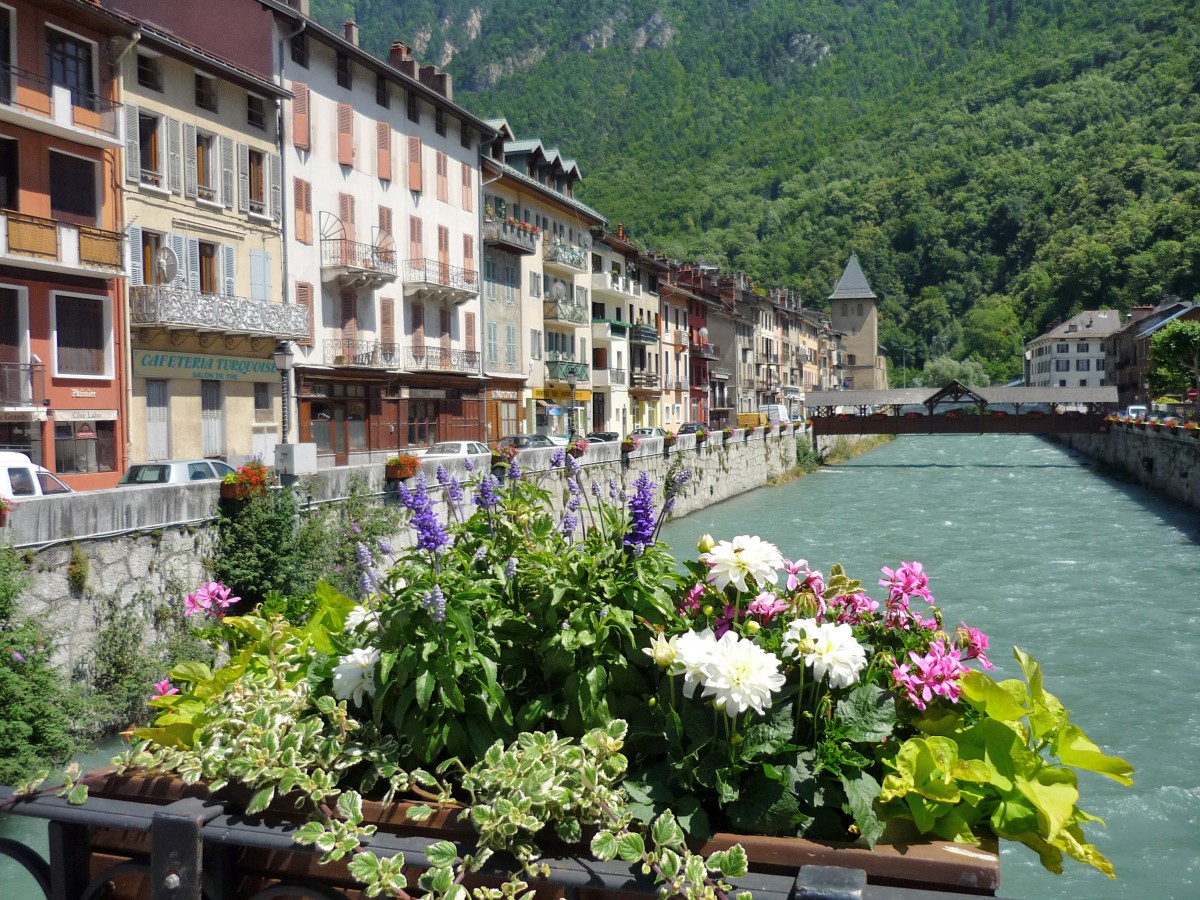
When I am visiting Moûtiers, I have to admit I feel like being somewhere in northern Italy. This is maybe due to the elegant iron balconies, the colourful façades and the picturesque cathedral. Exploring the town won’t take you more than a couple of hours. Moûtiers was once the capital of the archbishops of Tarentaise. Their authority over the valley was lost to the House of Savoy in 1335.
Moûtiers commands access to the Tarentaise Valley towards Bourg-Saint-Maurice and the Three Valleys (Les Trois Vallées), including some of France’s most extensive ski domains.
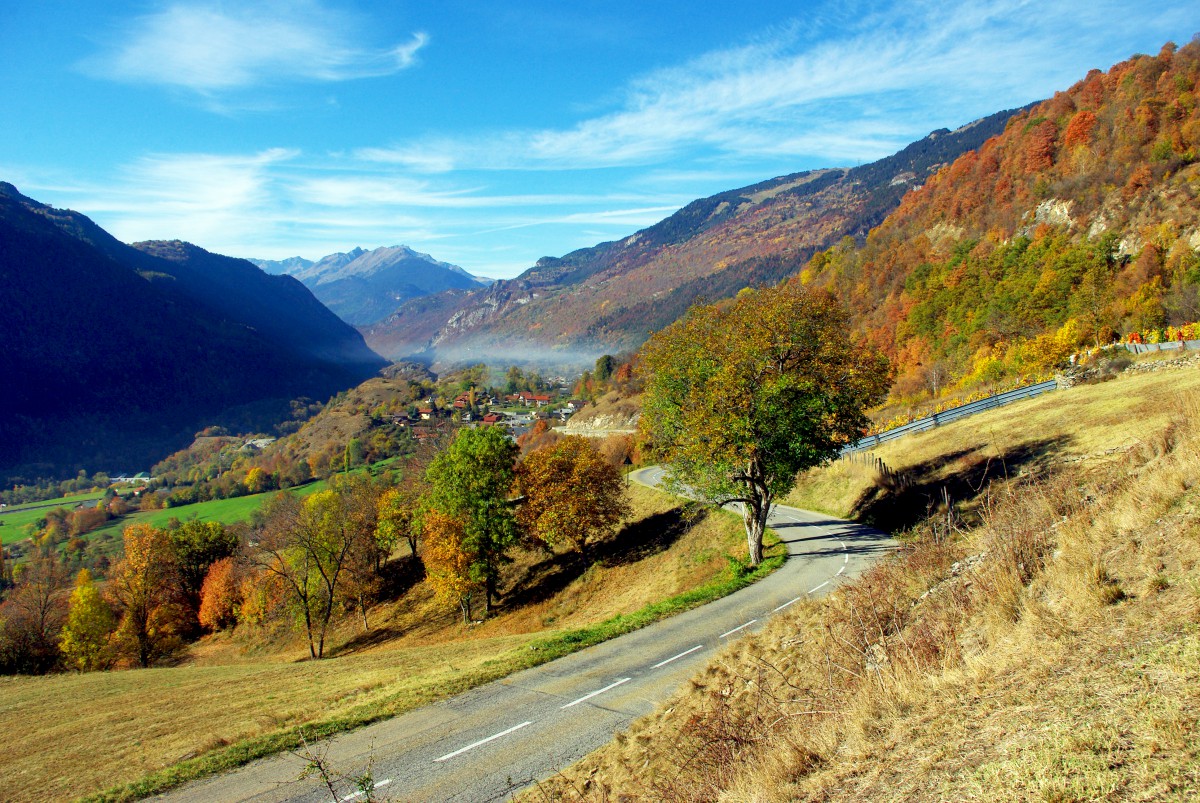
On your way to Bourg-Saint-Maurice, you will pass through the Etroit du Siaix, another site where the valley is suddenly compressed along the sides of the mountains. This is the narrowest passage of the whole valley of the River Isère. A tunnel was inaugurated in 1990 to ease the crossing of this dangerous place. From the village of Centron, the valley becomes more open and wider.

Stop at Aime to admire the old Saint-Martin basilica of Romanesque style dating back to the 11th century. The Middle Tarentaise has a significant concentration of Baroque churches with onion-shaped steeples. If they are open, enter to marvel at fine altarpieces. A few exciting churches include Aime, Granier, Macot-la-Plagne, Landry, Peisey, Hauteville-Gondon, and Vulmix…
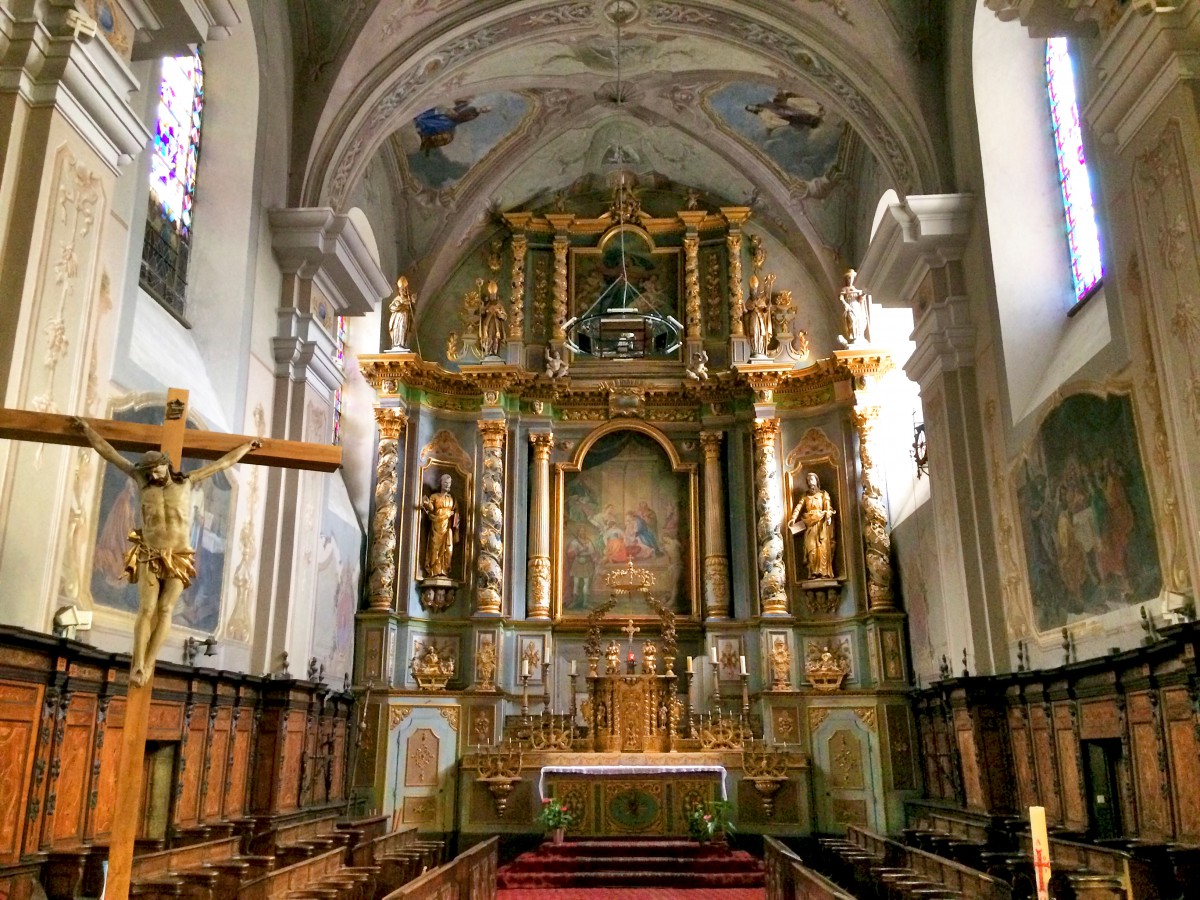
From Aime, you can take the road that climbs up to the Versant du Soleil, the adret slope of the mountain directly exposed to sunlight. Spectacular views of the Vanoise massif await you as you cross the villages of Tessens, Granier, La Côte d’Aime, Valezan, Les Chapelles and Vulmix.
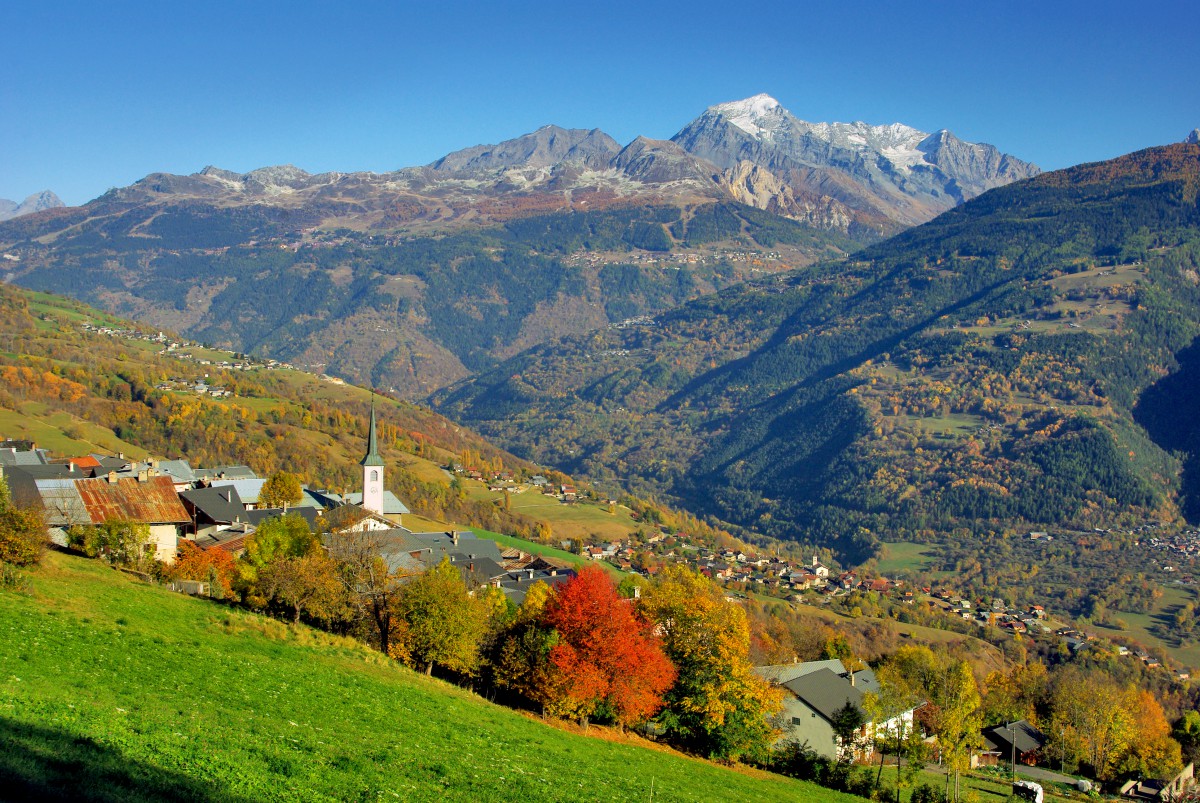
On the ubac (oriented south), the Middle Tarentaise gives access to the giant ski domain of Paradiski, which gathers the resorts of Montalbert, La Plagne, Montchavin, Les Coches, Vallandry and Les Arcs.

The Upper Tarentaise
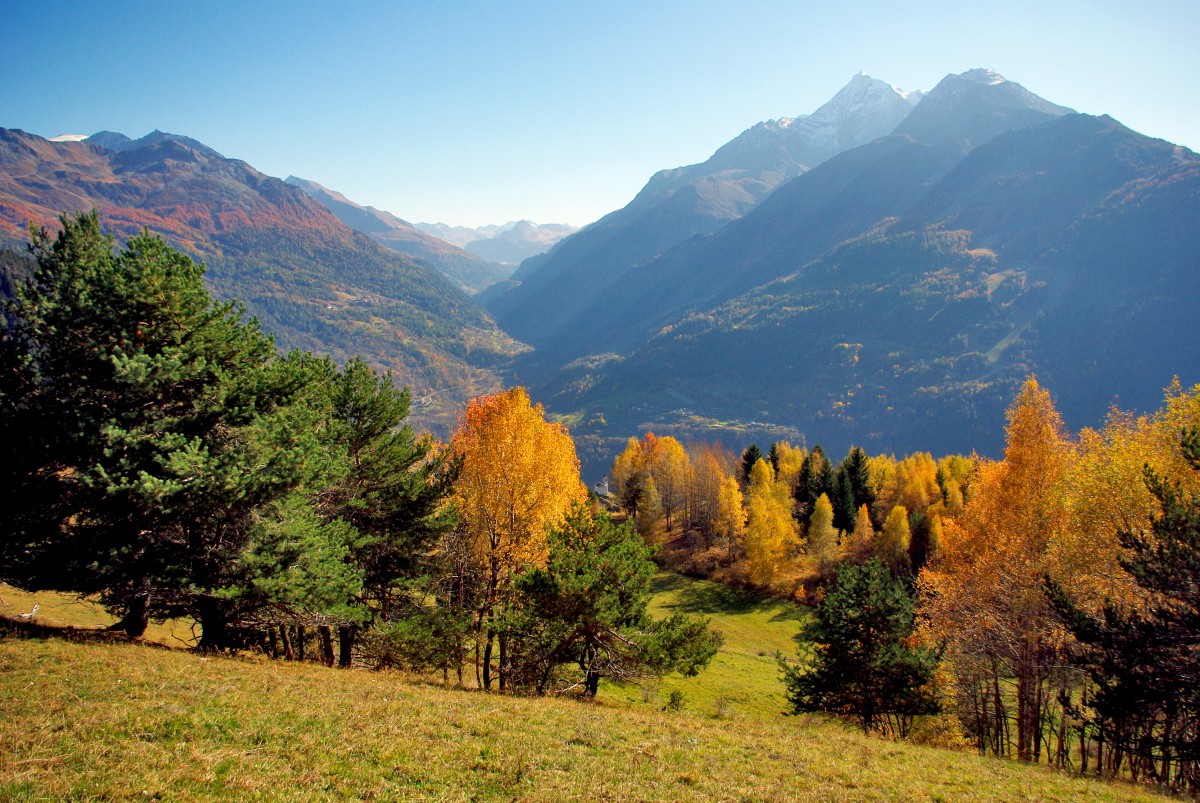
With a population of 7,200, Bourg-Saint-Maurice is the 6th largest city of the département of Savoie. The commercial and administrative centre is at the intersection of two main roads:
- The D1090 climbs to the Little St Bernard Pass (2,188 m) through endless hairpin bends. Dating from the Roman times, it connects the Tarentaise to Italy.
- The D902 follows the River Isère to the Iseran Pass (2,764 m), the Alps’ highest paved pass.
The D902 road winds up in a fantastic mountain landscape with pine forests, high pastures, stone chalets, waterfalls, tunnels, lakes, and glaciers. First, the road crosses Séez known for its baroque church. Its name derives from “six” in Latin, as it stood at the sixth milestone between Lugdunum (Lyon) and Milano (Milan).
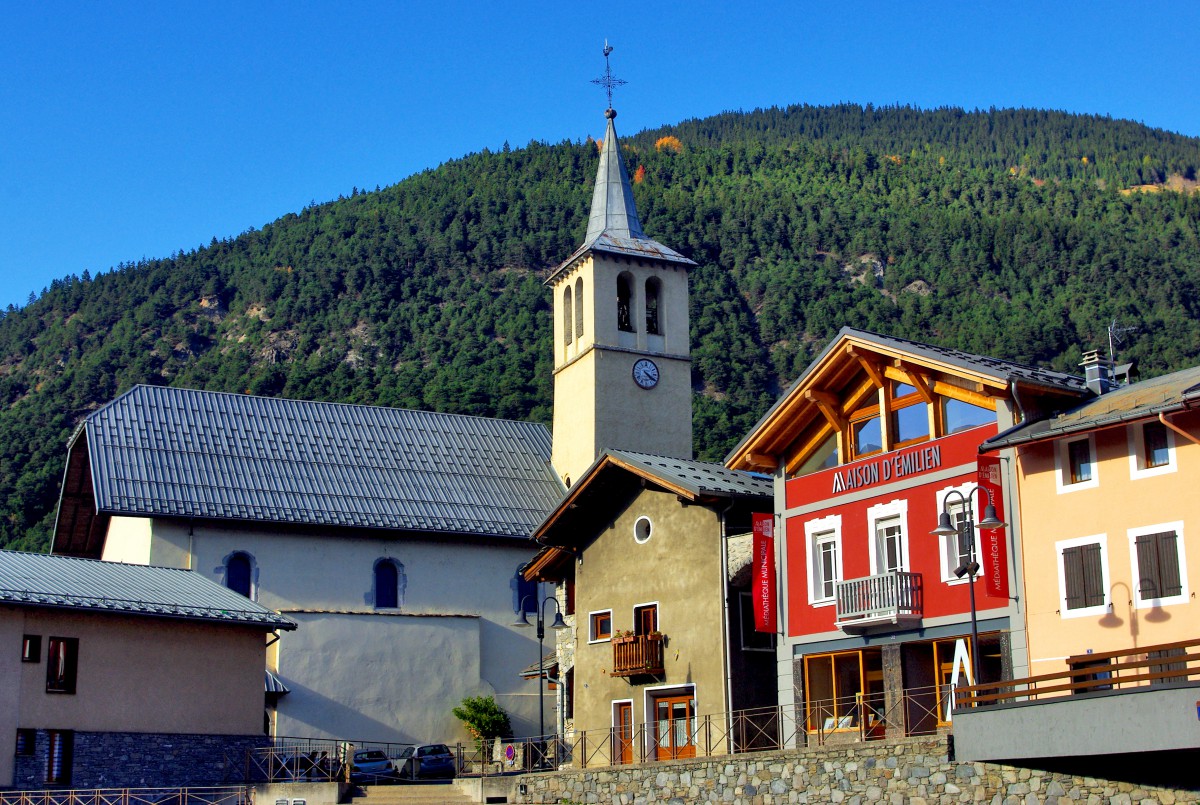
Next is the picturesque village of Sainte-Foy-Tarentaise and its old chalets with wooden balconies. A few hamlets of Sainte-Foy and Montvalezan are worth a visit for their traditional habitats: Le Châtelard, Le Miroir and Le Monal.
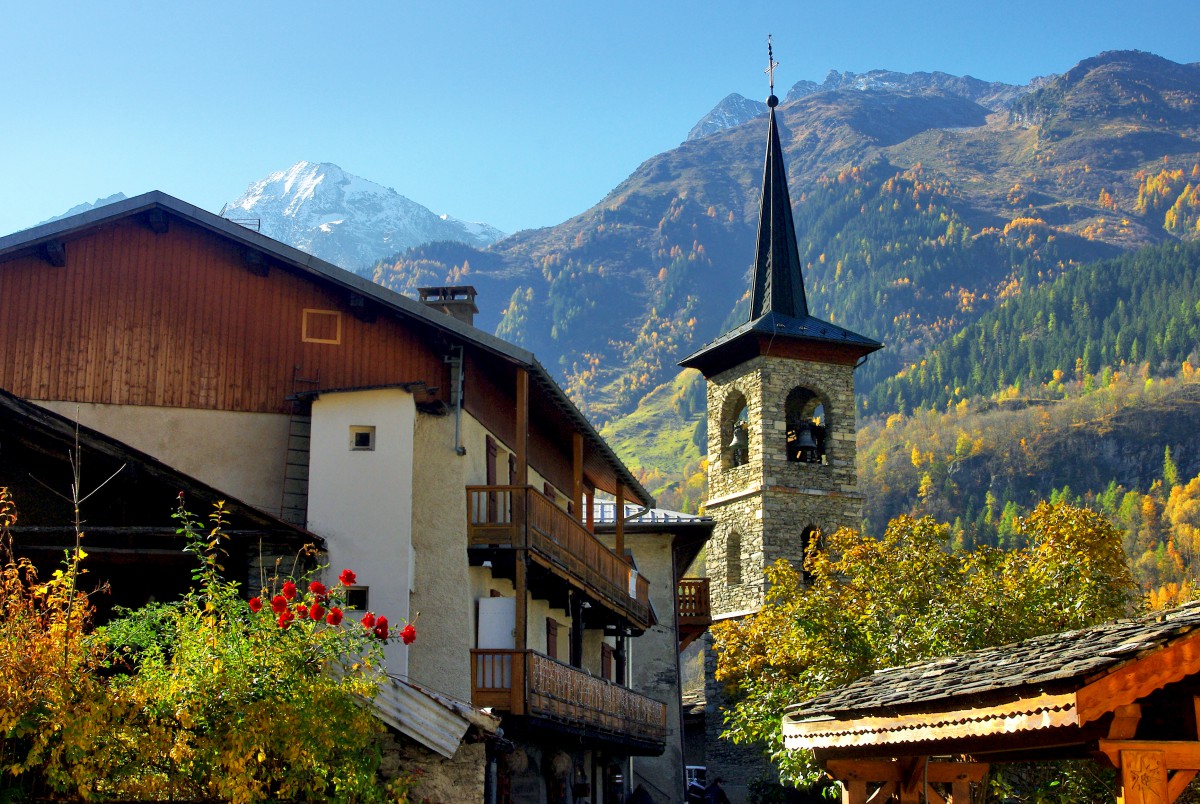
24 km from Bourg-Saint-Maurice stands the massive dam of Tignes, which stops the waters of the artificial Lake Chevril.
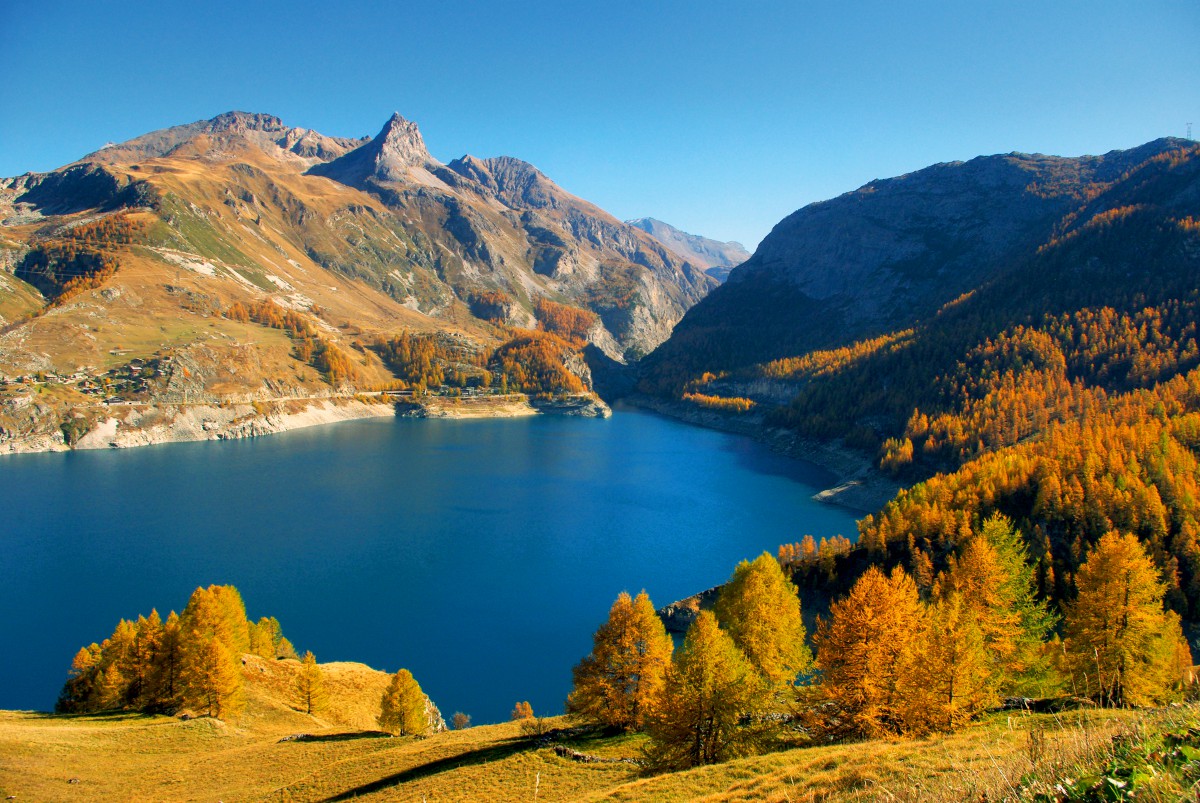
Two of Europe’s most renowned ski resorts are found beyond the lake: Tignes and Val d’Isère.
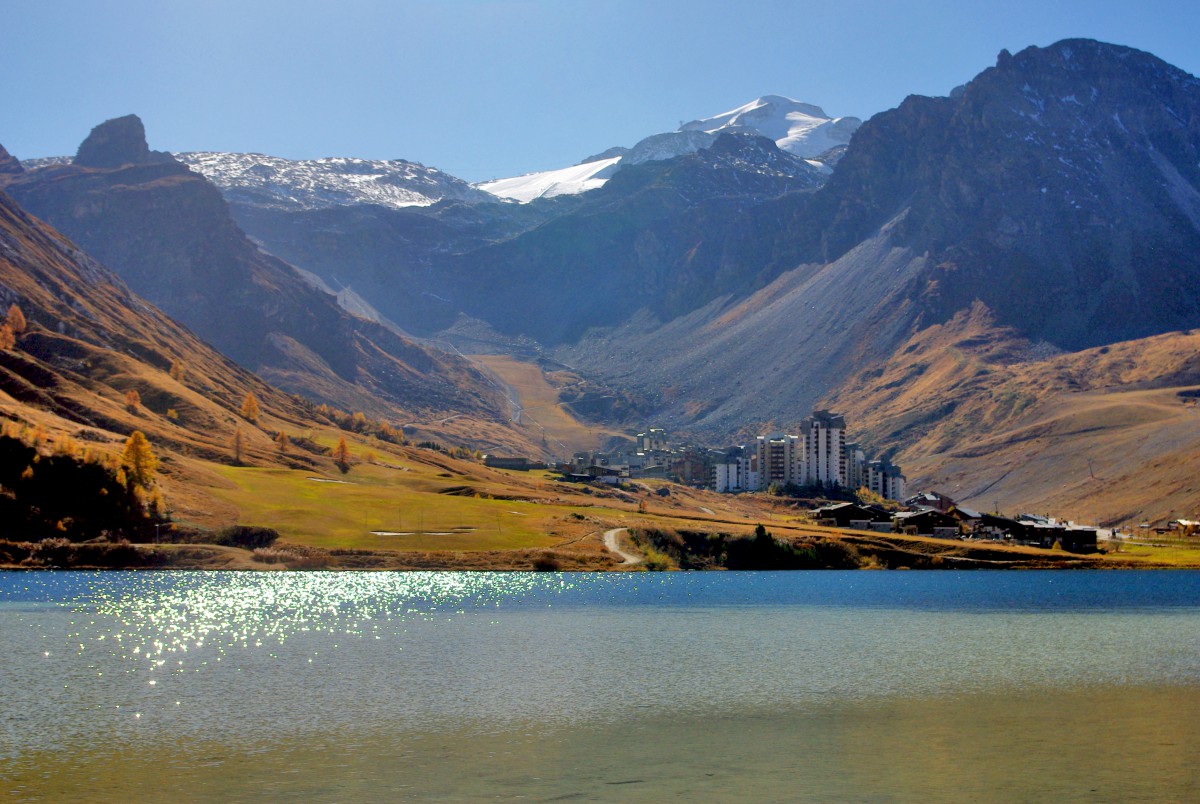
The climb to the Iseran Pass is a long and steep one. From Bourg-Saint-Maurice, it takes 48 km and an ascent of 1,955 m through a series of tunnels. The mountain pass links the Tarentaise Valley (Isère River) to the Maurienne Valley (Arc River).
The tributary valleys of the River Isère
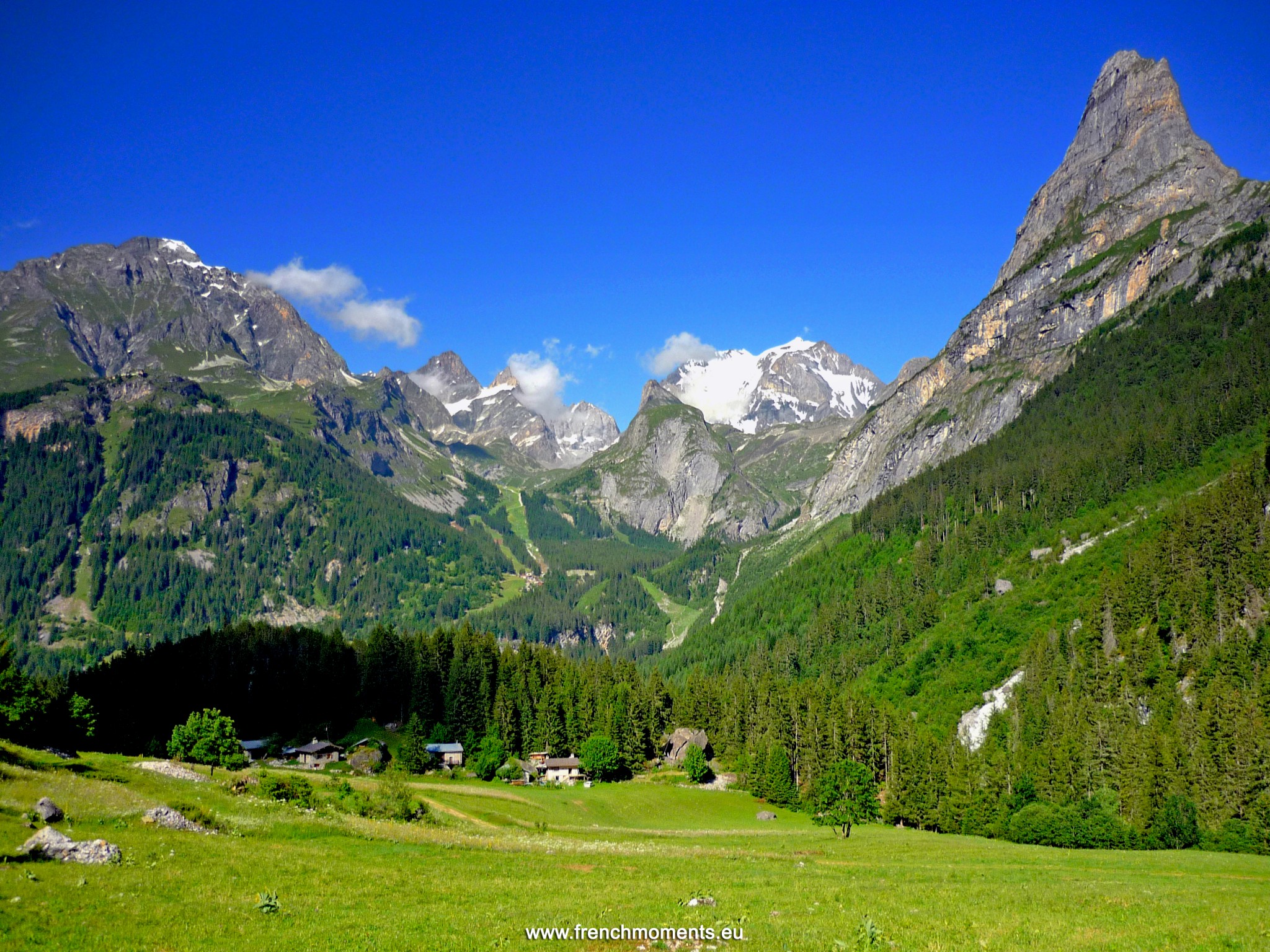
Several tributary valleys join the central valley where the Isère River flows. These valleys are historically part of the Tarentaise region. Mostly found on the south side of the Tarentaise Valley, they are occupied by some of France’s busiest ski resorts. They are called Dorons (streams).
- Valley of Morel (ski resort: Valmorel)
- Valley of Les Belleville (ski resorts: Saint-Martin-de-Belleville, Les Menuires and Val Thorens)
- Valley of Doron des Allues (ski resorts: La Tania and Méribel)
- Valley of Doron de Bozel (ski resort: Courchevel).
- The latter three valleys are known as Les Trois Vallées. This is the world’s largest ski domain, with over 600 km of ski slopes.
- Valley of Doron de Pralognan (ski resort: Pralognan-la-Vanoise)
- Valley of Ponthurin (ski resort: Peisey-Vallandry)
The Tarentaise Valley and the Vanoise National Park
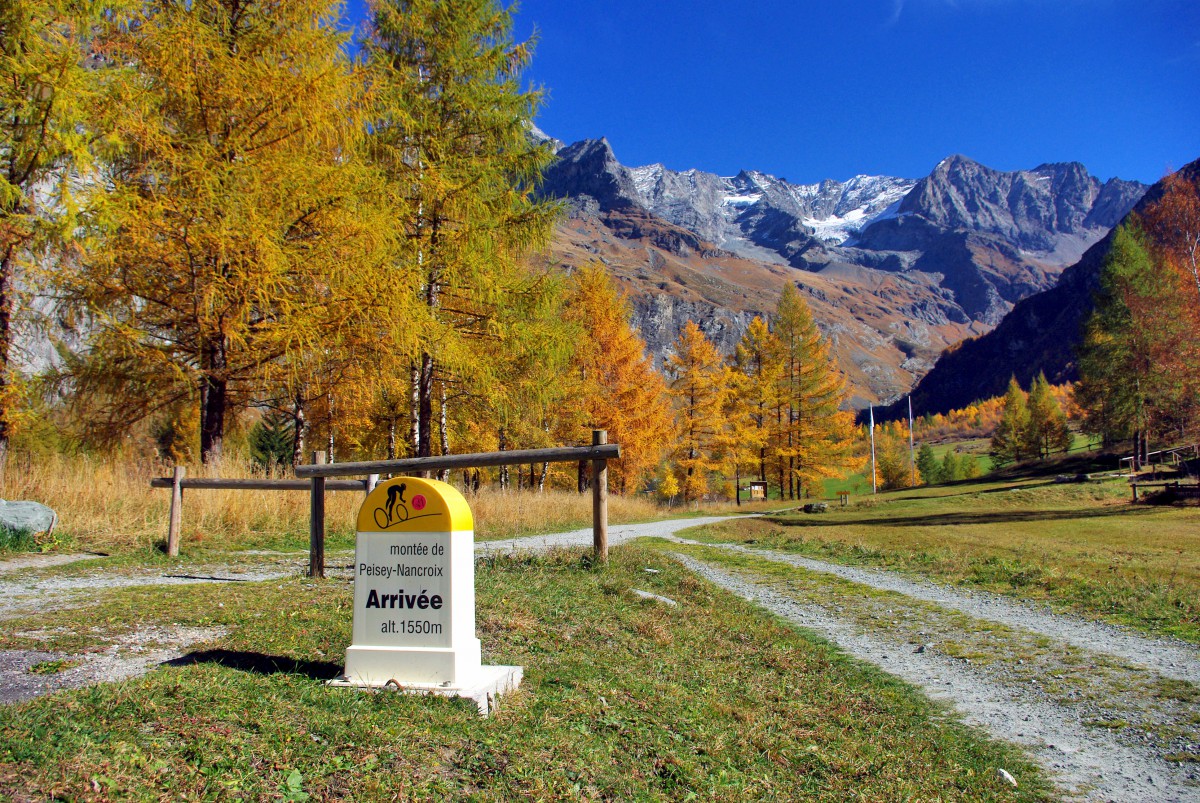
The south side of the Tarentaise Valley borders the limits of the Vanoise National Park, created in 1963. They are several ‘gates’ to access the National Park easily: Pralognan-la-Vanoise, Champagny-en-Vanoise, Peisey-Nancroix and Tignes. Some of the highest peaks of the massif can be seen from many parts of the Tarentaise: Bellecôte (3,416 m), Mont Pourri (3,779 m), Grande Motte (3,656 m), and Grande Casse (culminating peak at 3,855 m).
Religious art in the Tarentaise Valley
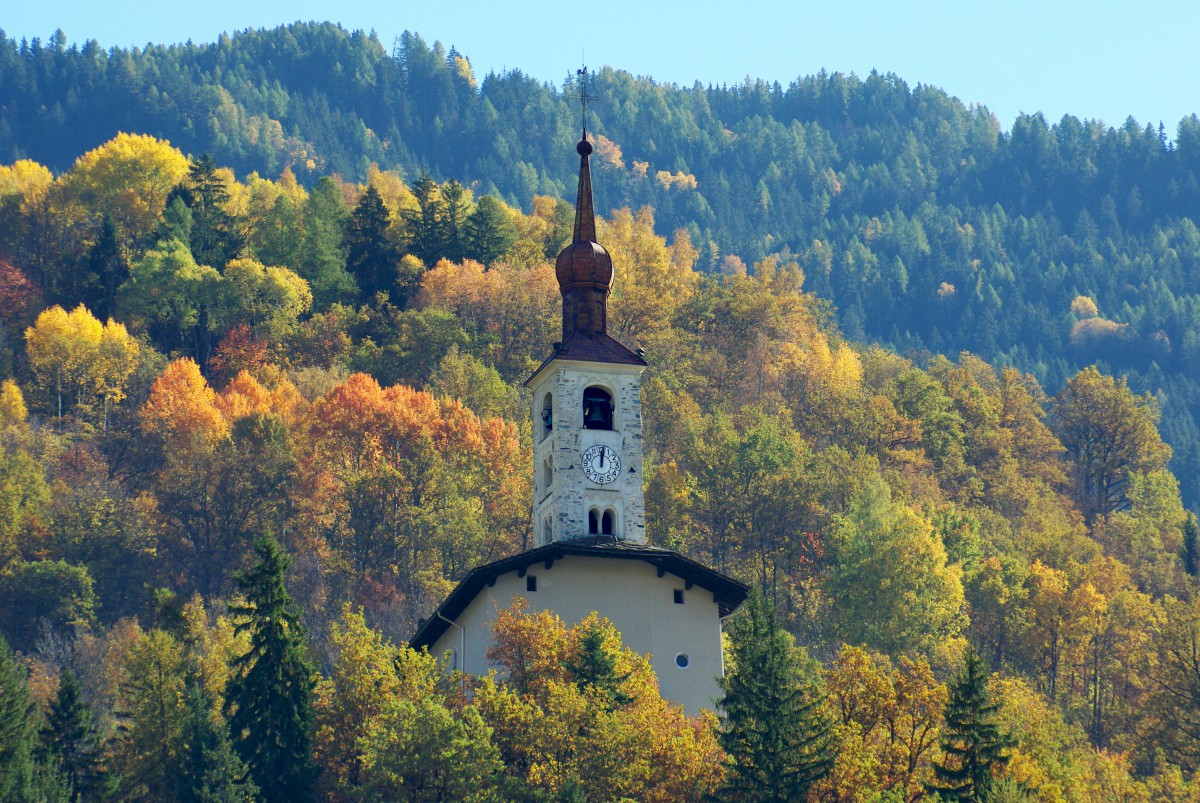
The Tarentaise boasts a rich religious heritage which manifests itself in Baroque style. The Middle Tarentaise comprises many churches with onion-shaped steeples reminiscent of Italy and Austria. If the exterior of the sanctuaries is usually sober, the surprise comes from the extravagant and sumptuous inside. Many take pride in housing a beautiful altarpiece placed in the church choir or in side chapels. They are characterised by a profusion of ornaments and sculptures finely designed with colours and gold.
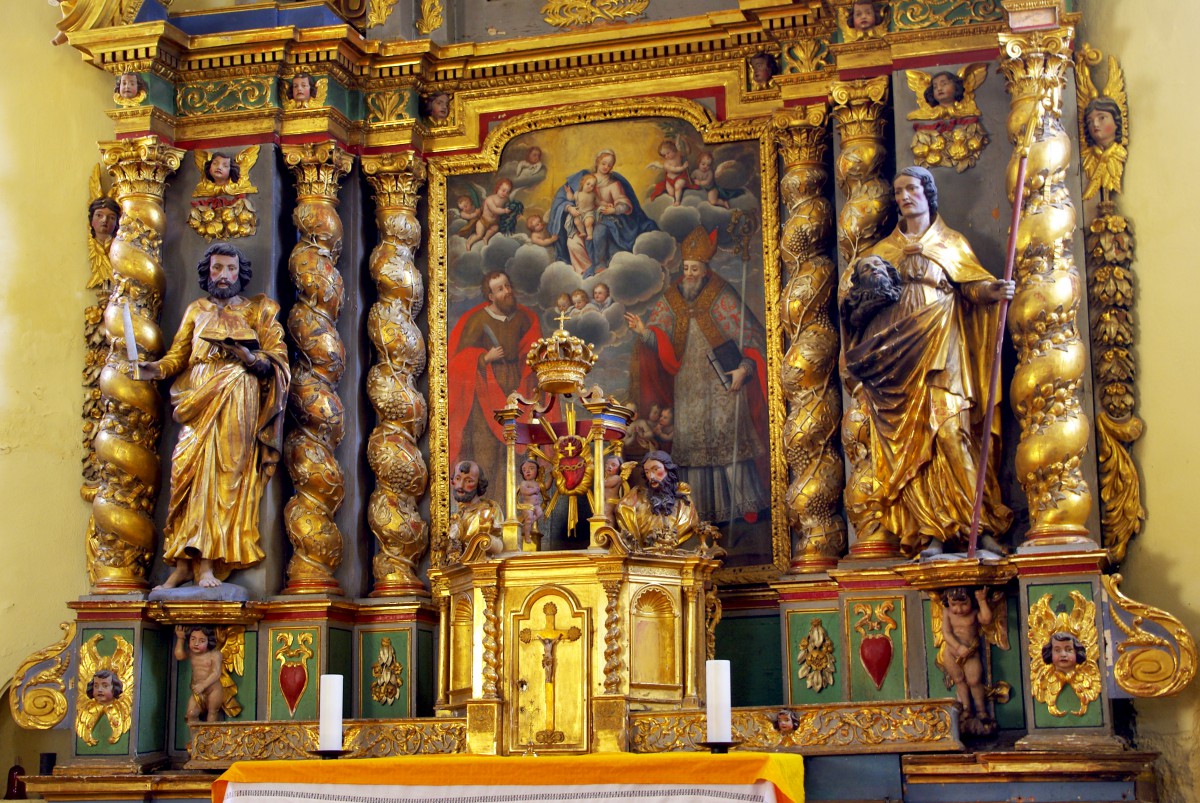
On your visit to the Tarentaise, check out the churches of Aime, Bozel, Champagny-en-Vanoise, Conflans, Granier, Hauteville-Gondon, Landry, Les Chapelles, Mâcot-la-Plagne, Moûtiers, Peisey, Séez, and Vulmix.
Spa resorts in the Tarentaise Valley
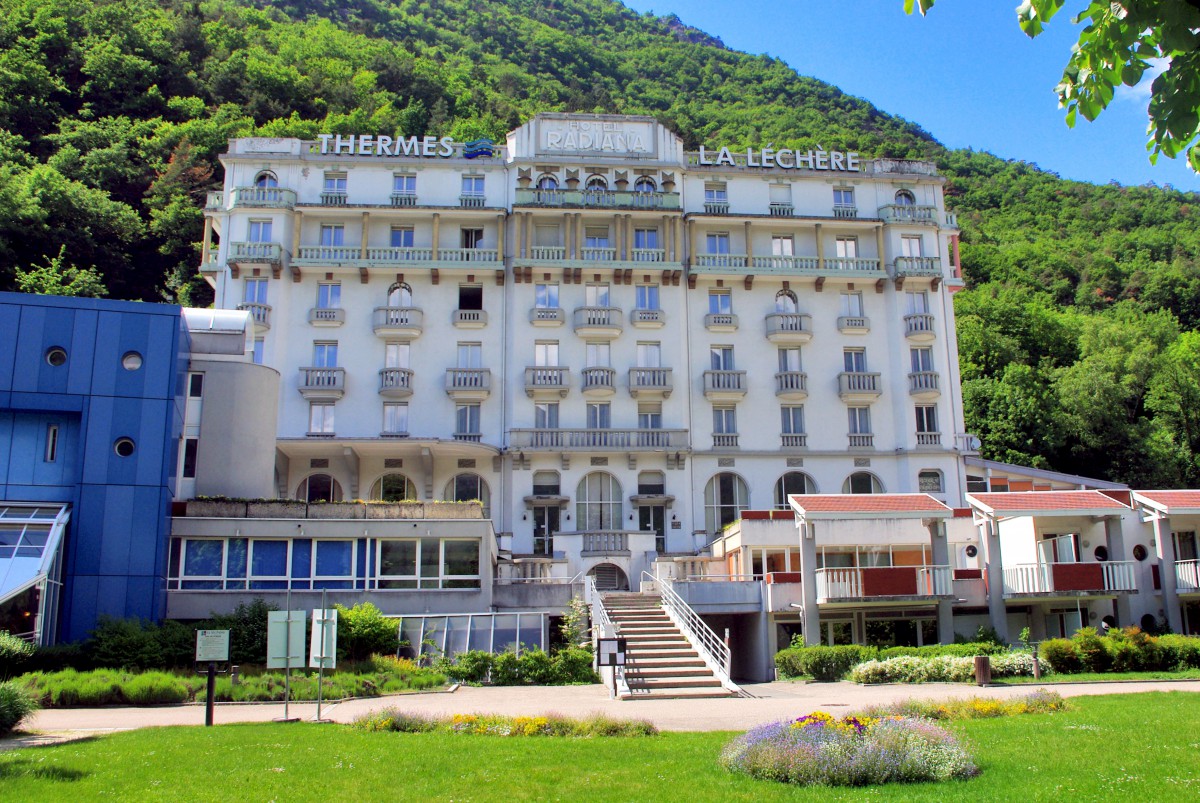
Three alpine spa towns are in the Tarentaise: La Léchère-les-Bains, Salins-les-Thermes and Brides-les-Bains.
- La Léchère-les-Bains specialises in treating vascular diseases, gynaecological complaints and rheumatism.
- Salins-les-Thermes, nicknamed Sea of the Alps (Mer des Alpes) for its incredible water flow rate, offers treatments for skin diseases and rheumatisms thanks to its salted waters. (Salins should not be confused with Salins-les-Bains, another spa resort in the Jura mountain!)
- Brides-les-Bains is a pleasant and peaceful spa resort on the way to discovering the Vanoise massif. Spa treatments offer weight-loss sessions and specific slimming and renewal programmes.
The Tarine cow

On your summer holiday to the Tarentaise, you will encounter the local alpine cow grazing on high pastures with its massive bell around the neck: the Tarine.
For centuries, the Tarentaise has had its breed of cow (the mountain cow was given this name officially in 1888).
From the end of the 19th century, the Tarine spread across Savoy and the mountainous regions of France (Vosges, Pyrenees, Massif Central). During the 20th century, the cow was exported to North Africa and North America.
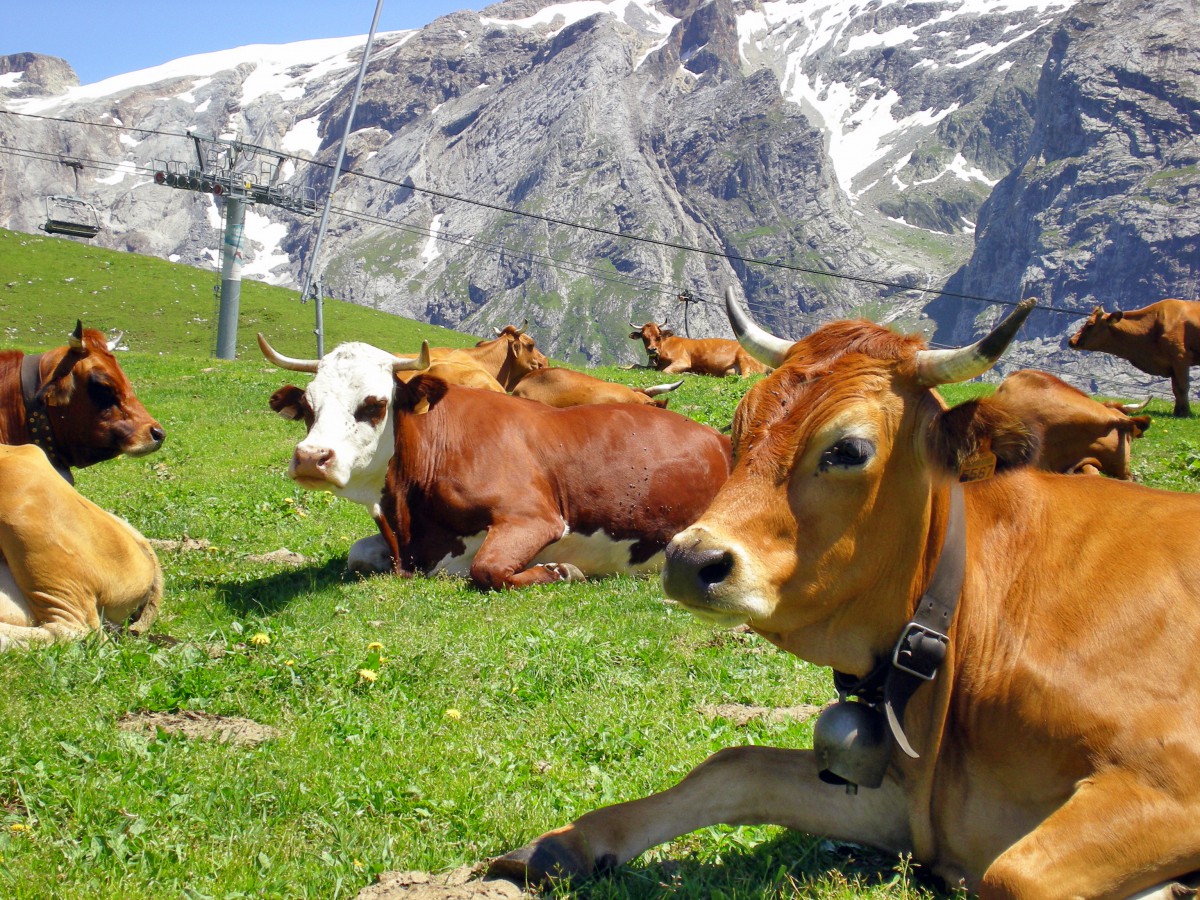
The Tarine cow is recognisable by its uniformly reddish-brown coat, black hooves, and eye hair. The Tarine is at ease in all mountain landscapes. The dairy cow is a generous milk producer (4,850 kg of milk annually). The cow’s milk is essential for producing the local cheese: Beaufort, the prince of gruyère cheese.
More info about the Tarentaise Valley

- For British tourists, direct Eurostar train services link London to Moûtiers, Aime and Bourg-Saint-Maurice in Winter and Spring (although services have been altered during and since the pandemic). Other regional express trains (TER) call at the many stations along the Tarentaise all year round.
- The closest international airports are Lyon and Geneva. The small airport of Chambéry offers low-cost winter services with British and Dutch airports.
- The website of Savoie-Mont-Blanc, the Tourist Information Board of Savoie and Haute-Savoie (in English)
- The website of the Assemblée du Pays Tarentaise Vanoise (APTV): Savoie-Tarentaise.com (French only)
- The website of the Communauté de Communes de Haute Tarentaise: Tourisme Haute-Tarentaise.fr (French only)
- The official website of the Vanoise National Park (French only).
Have you been to the Tarentaise Valley? Let us know where are your favourite sites by commenting below!
PIN IT for later!
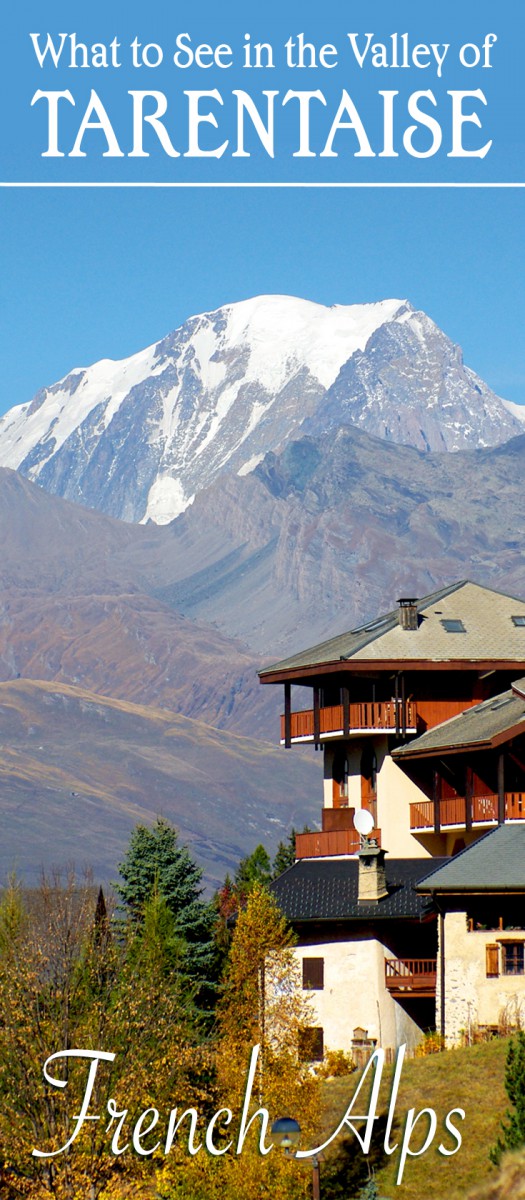
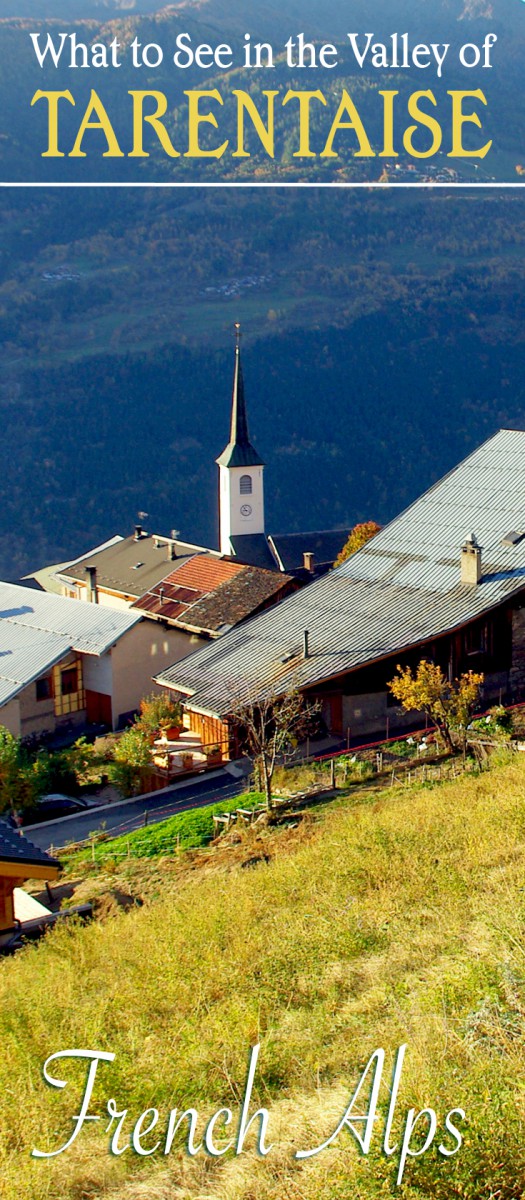
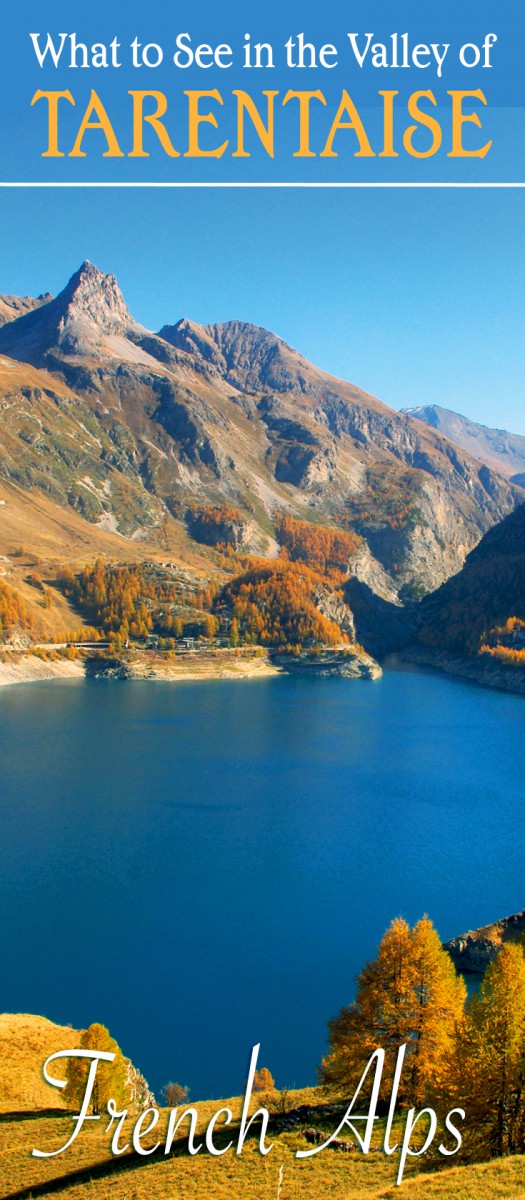
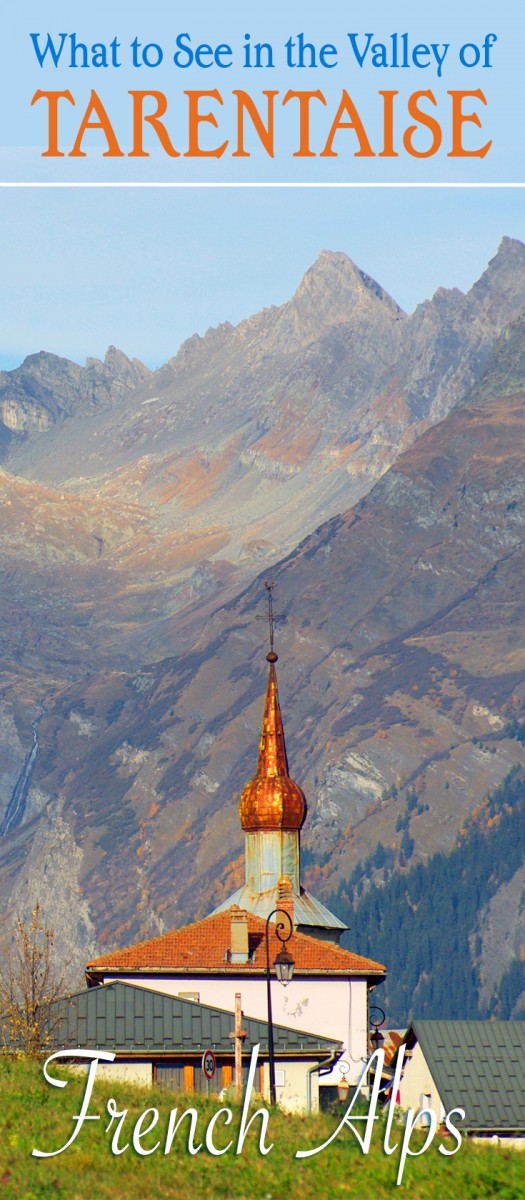
More photos of the Tarentaise Valley
The Valley in Winter
More photos of the Tarentaise Valley in Winter:

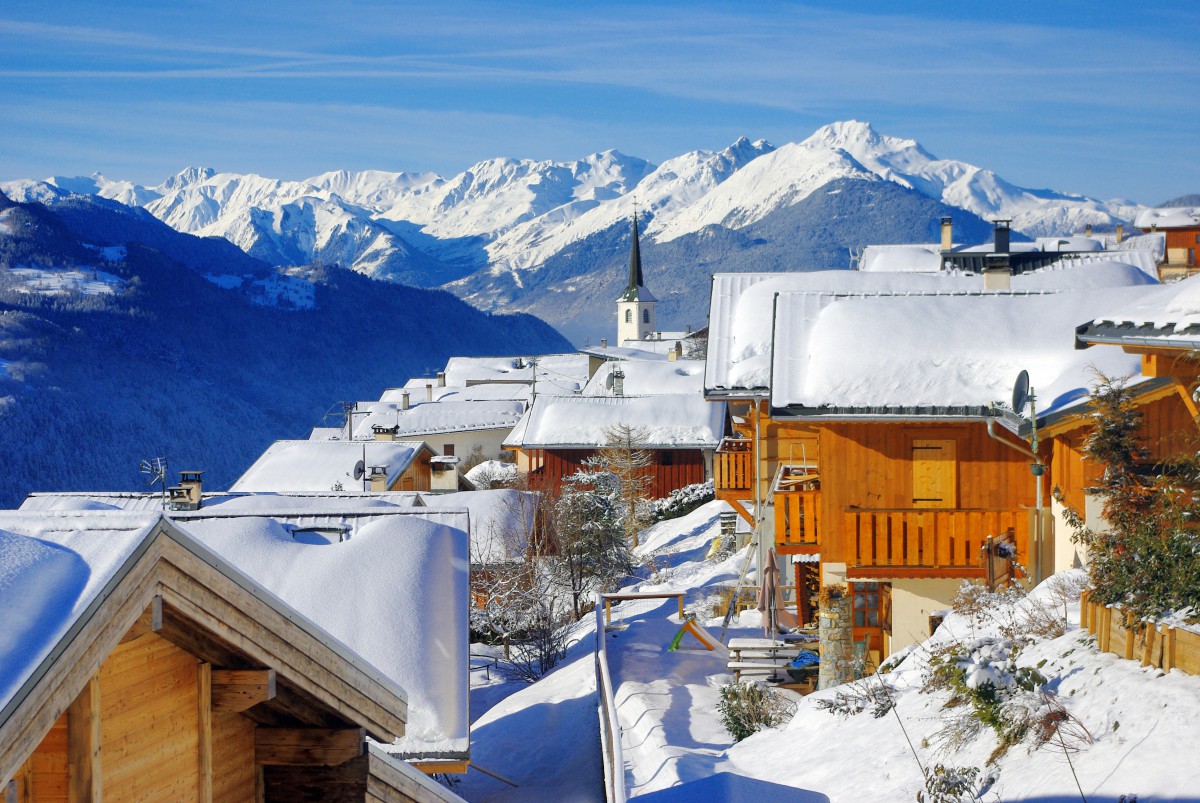
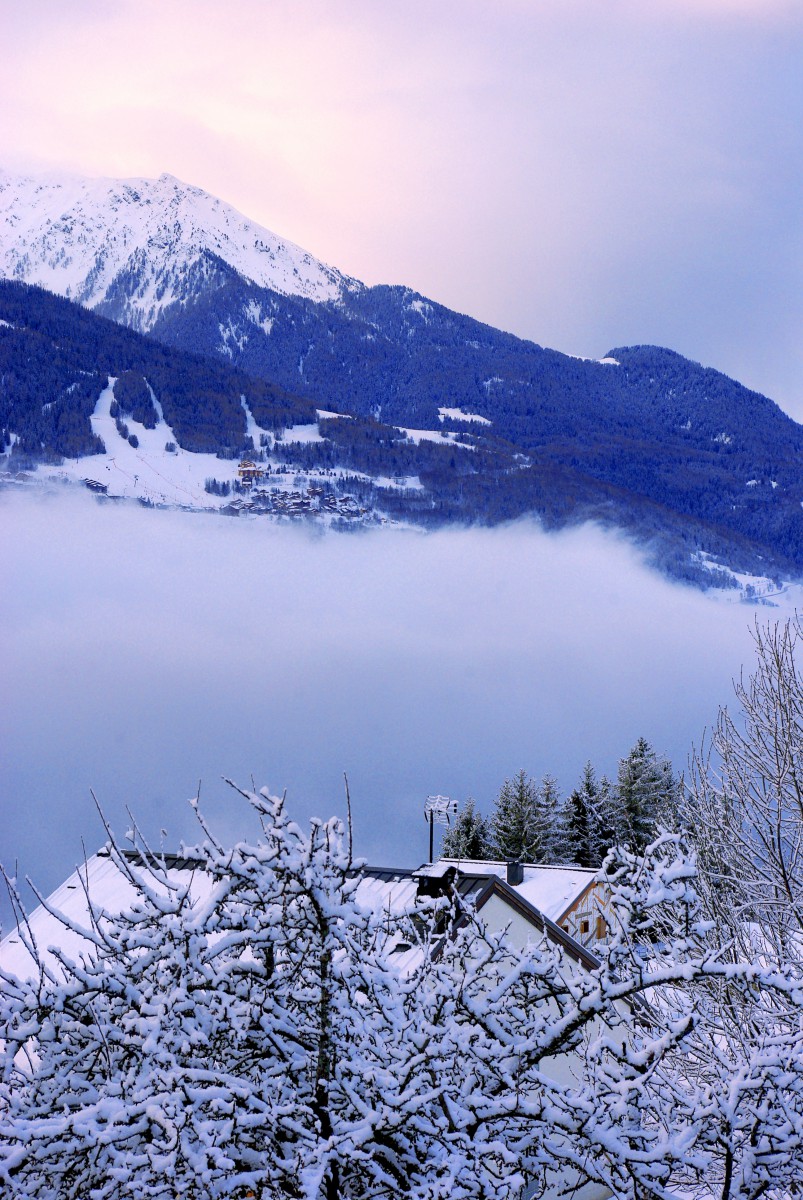

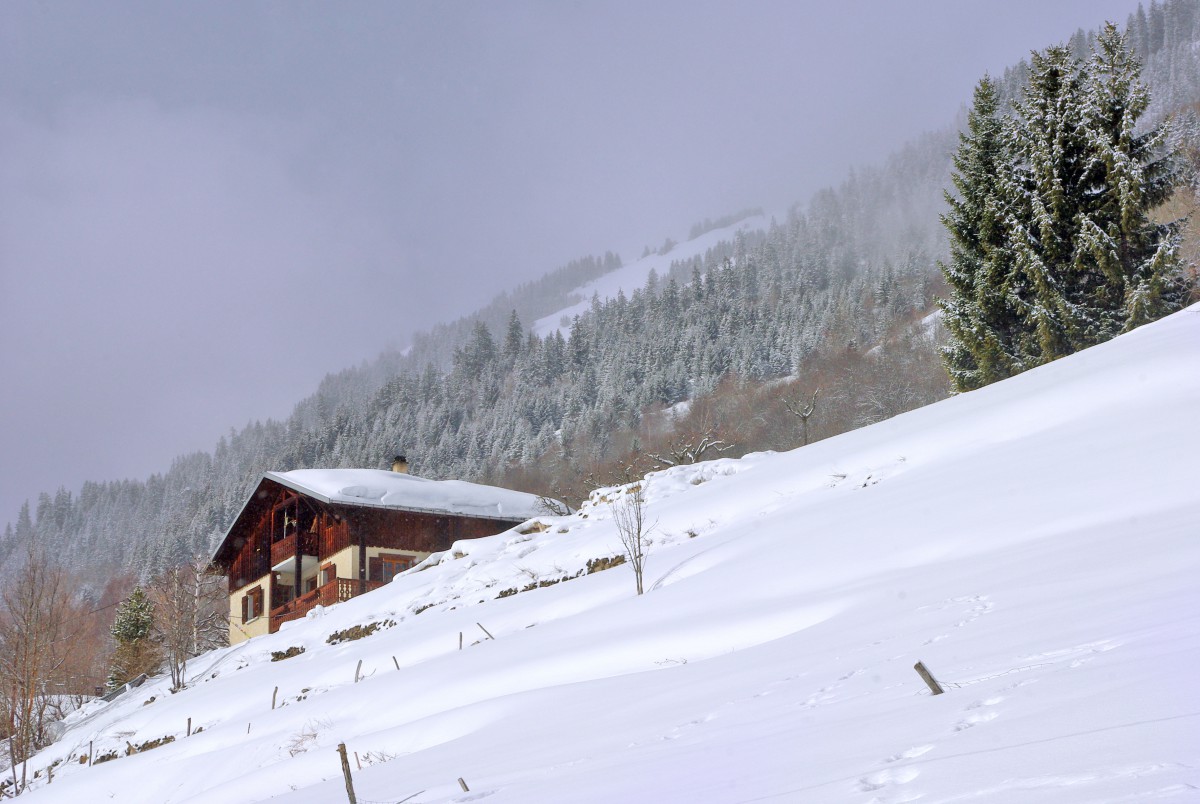

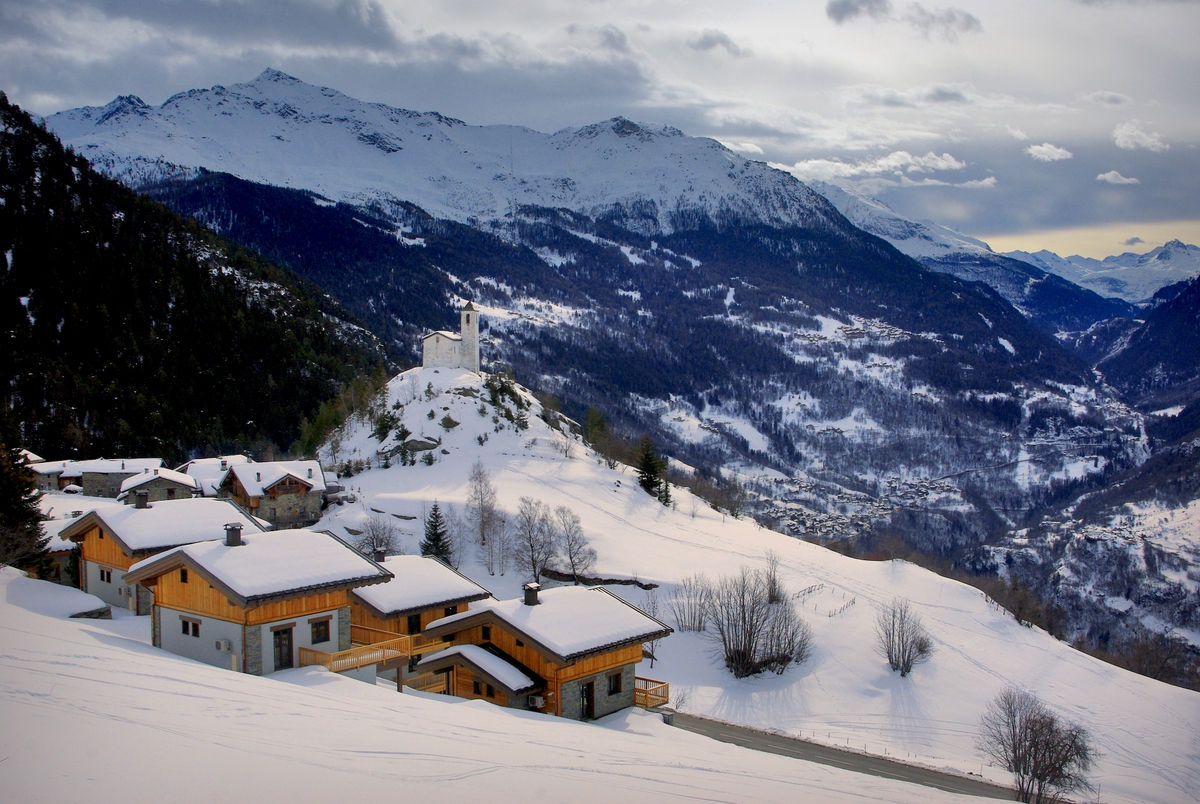
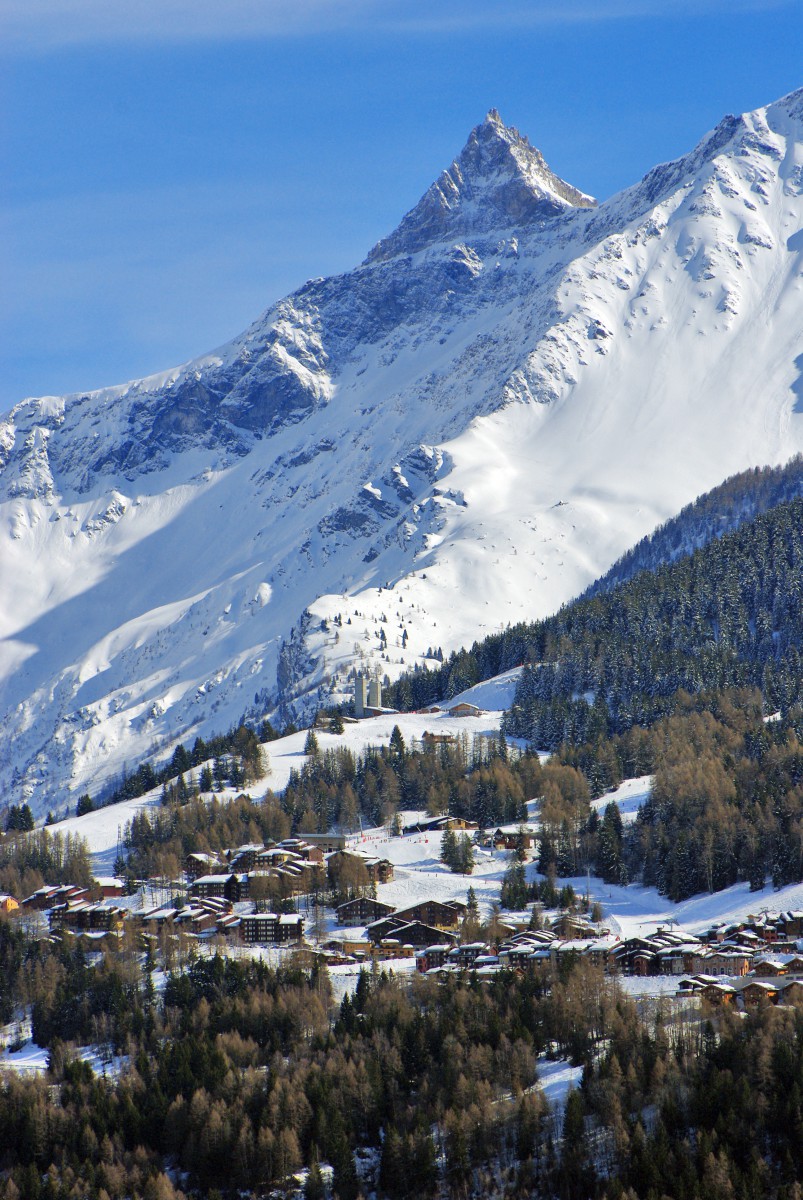

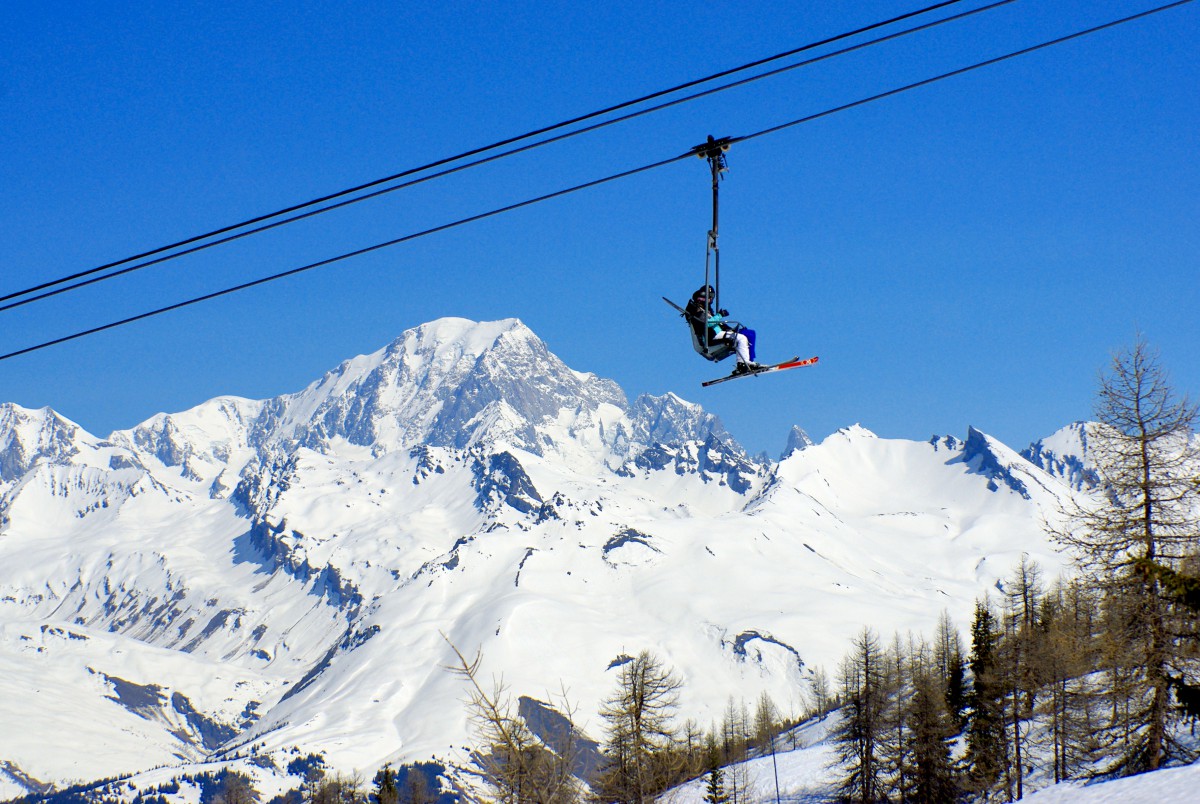
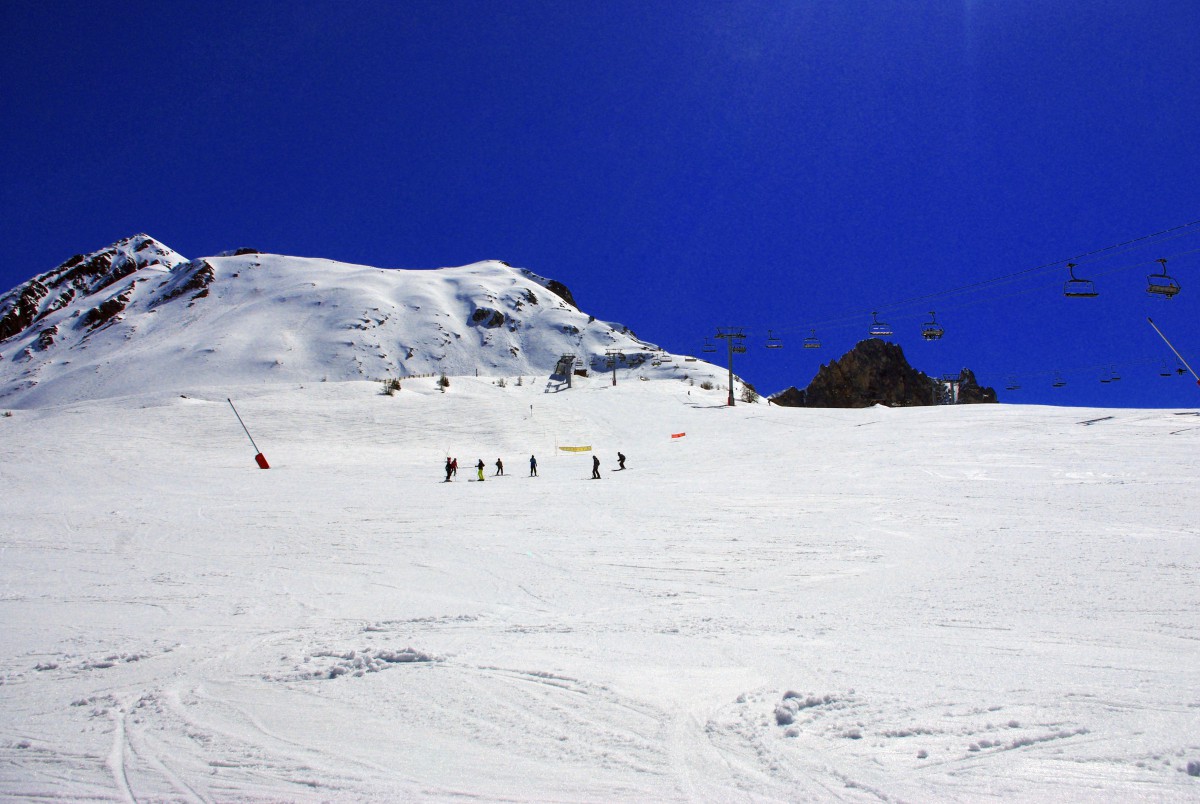
The Valley in Spring
More photos of the Tarentaise Valley in Spring:
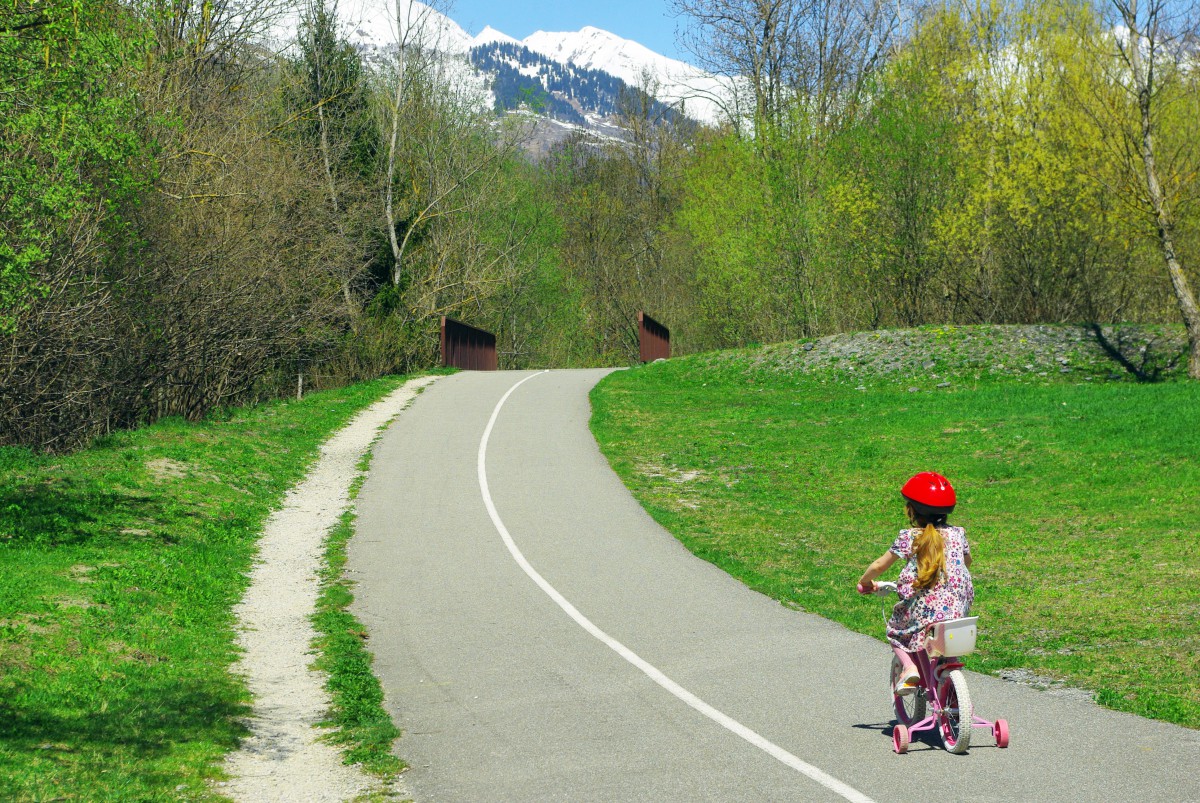
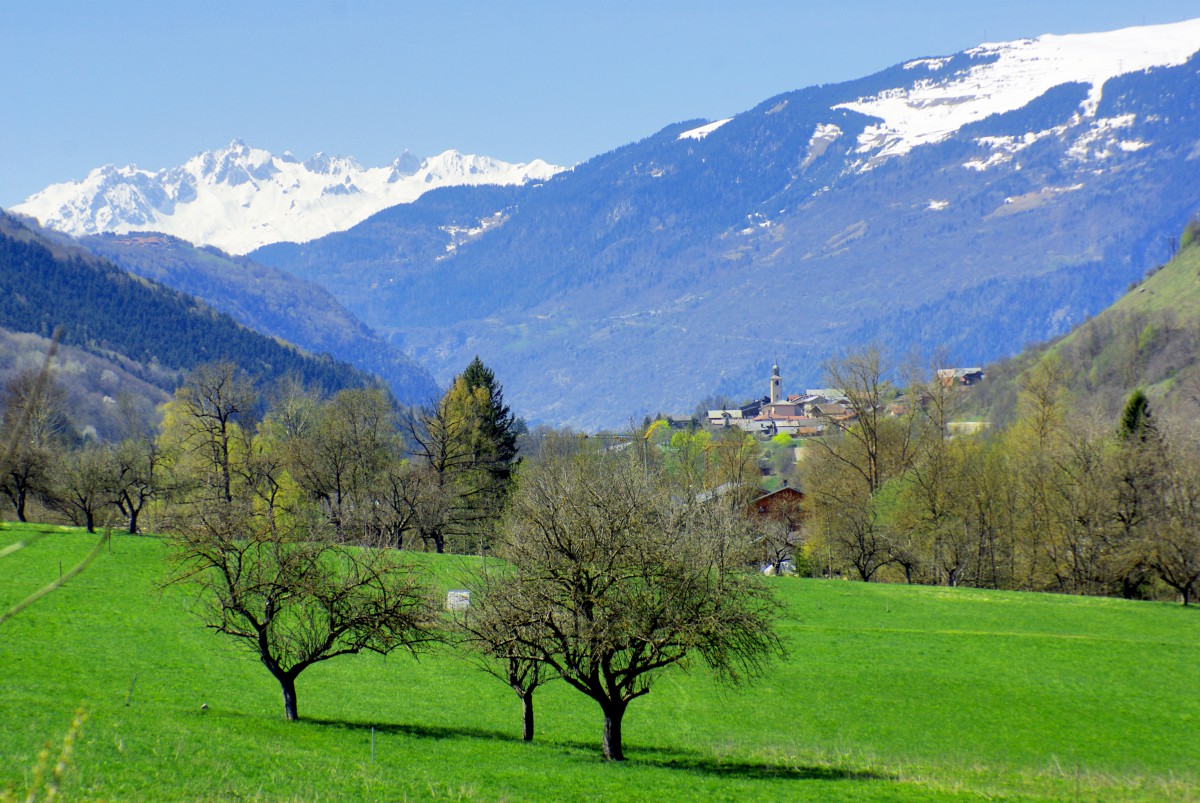
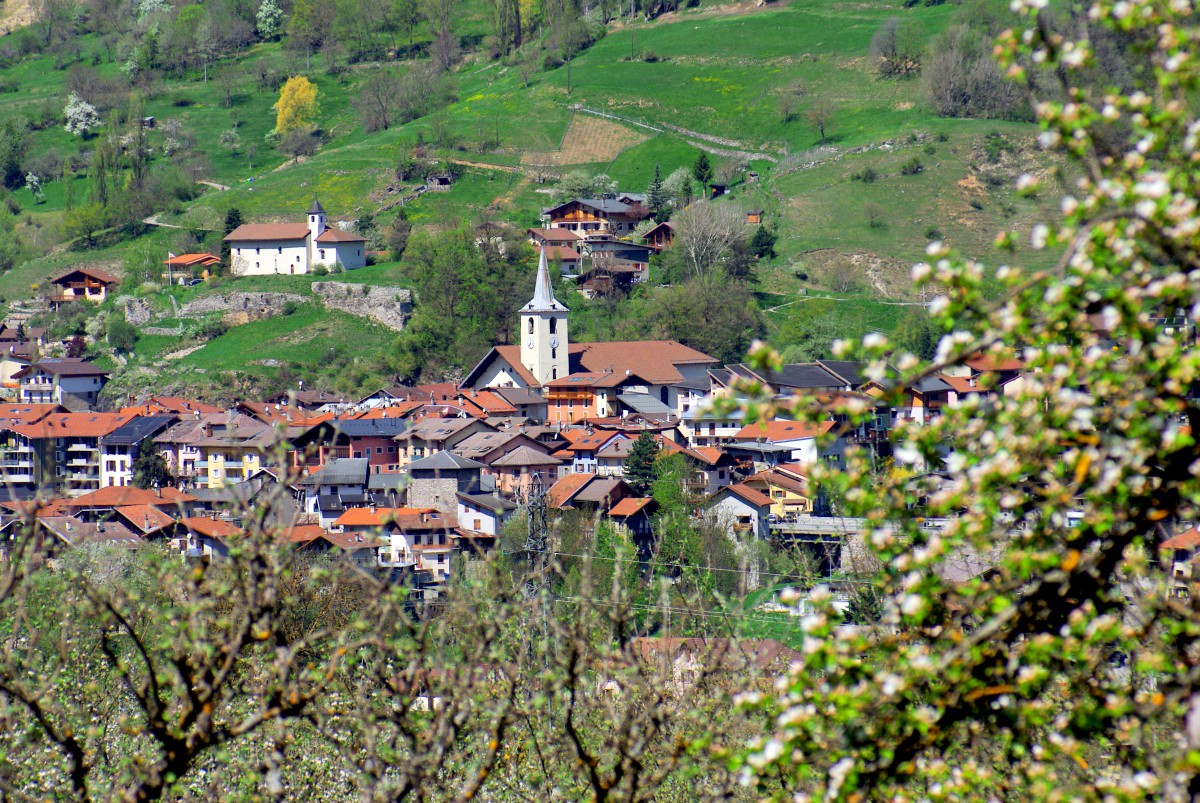
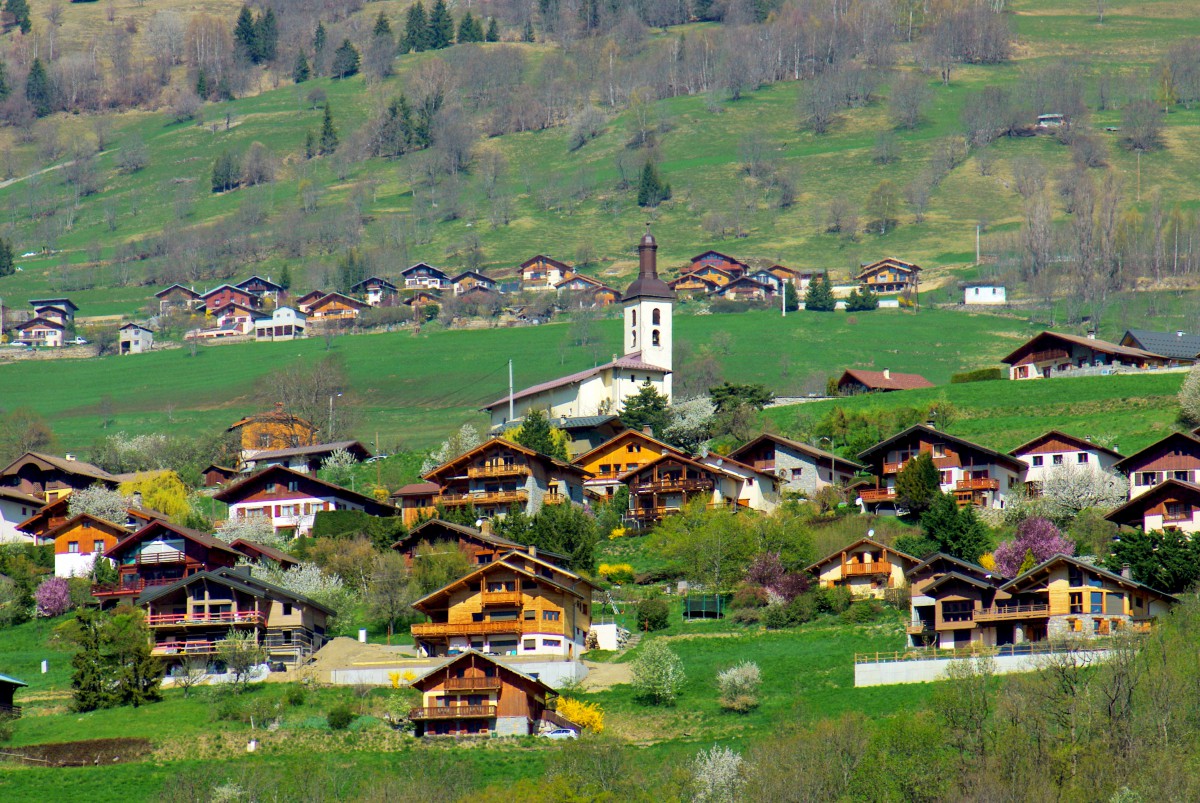
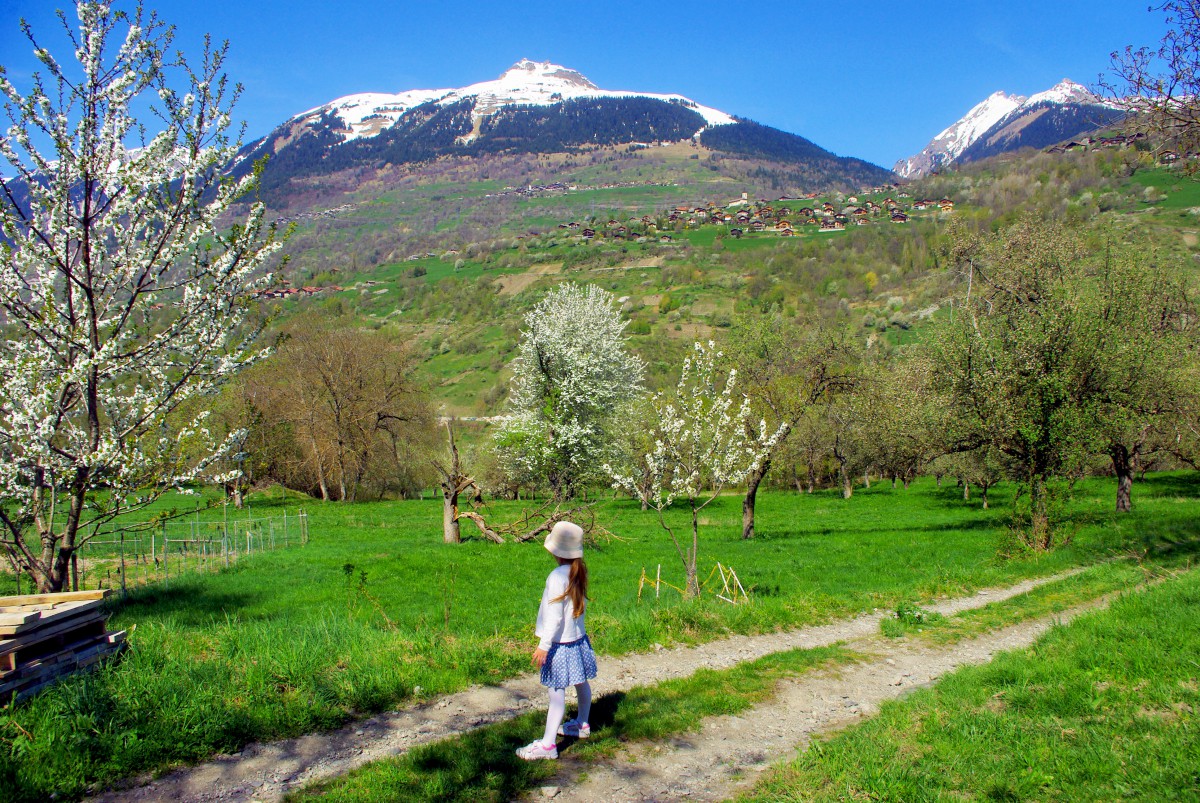
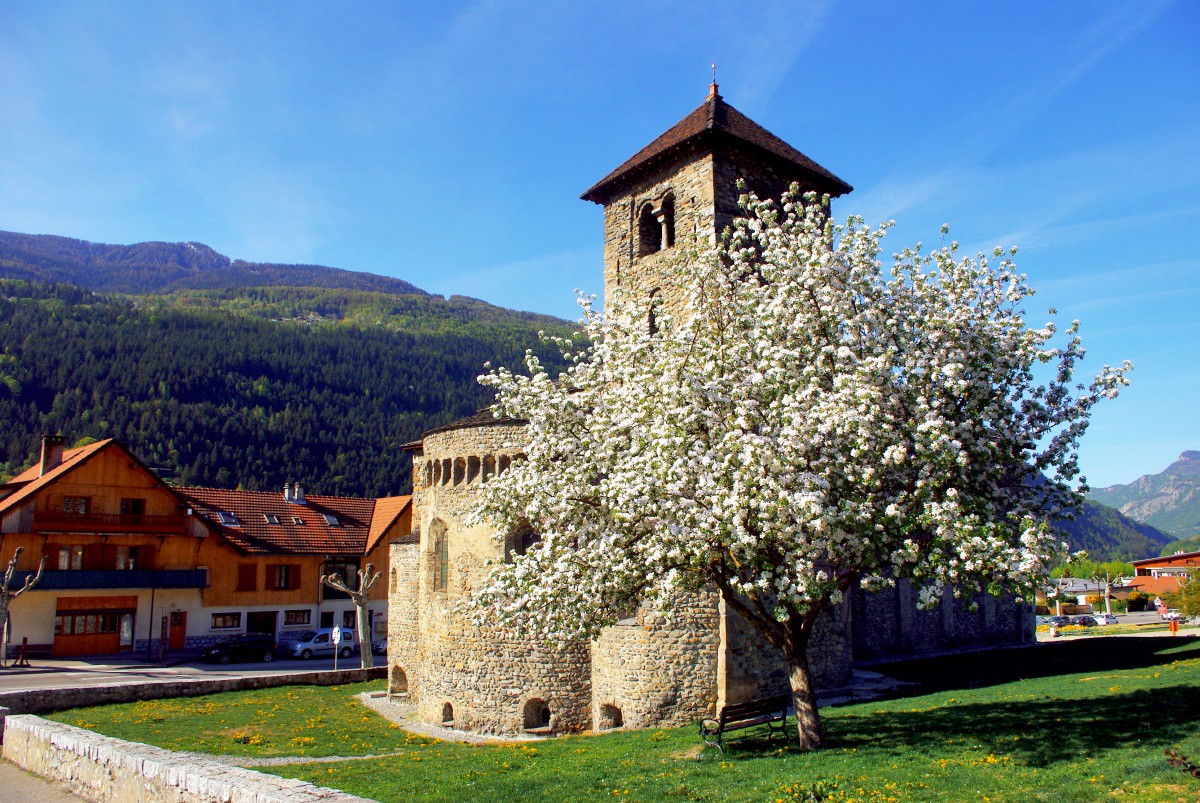
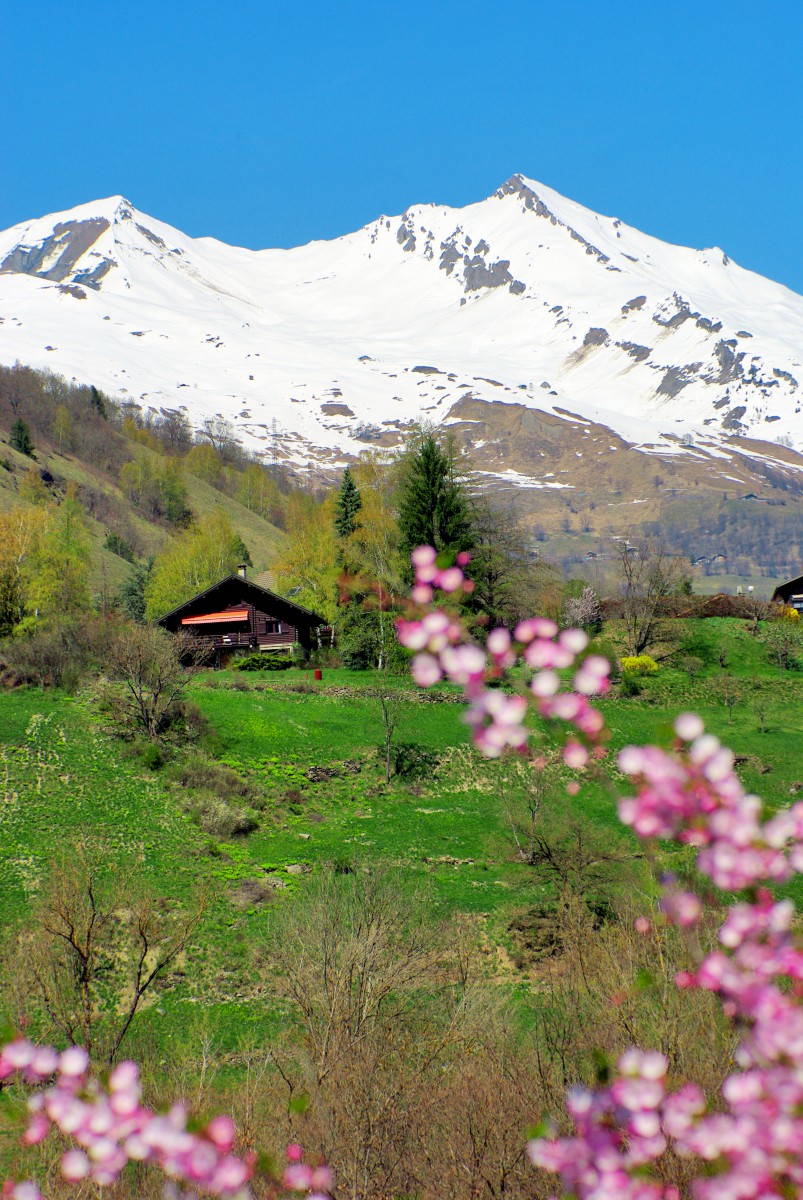
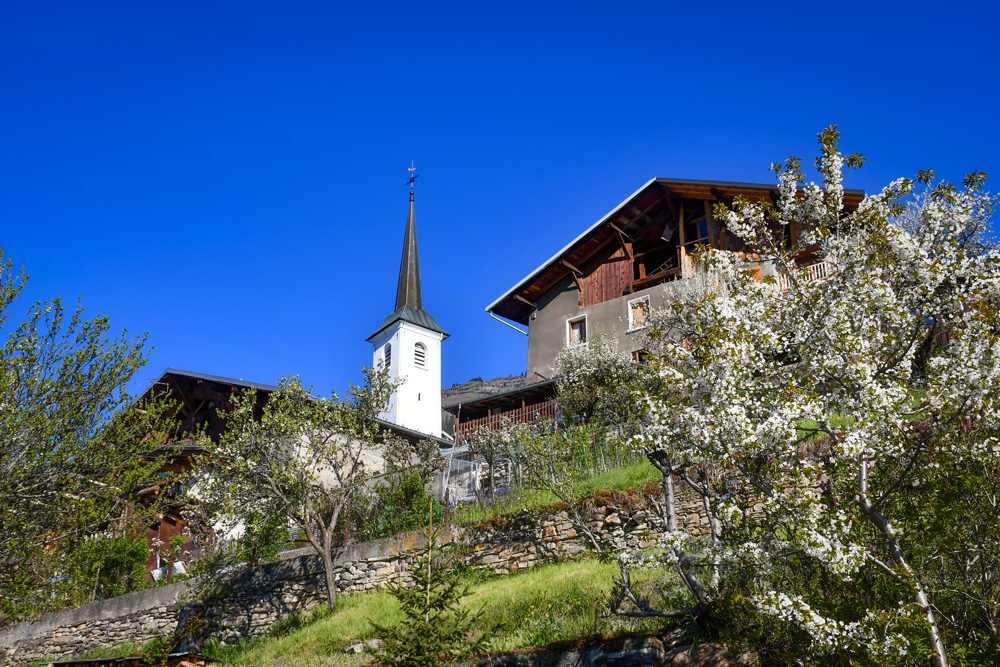
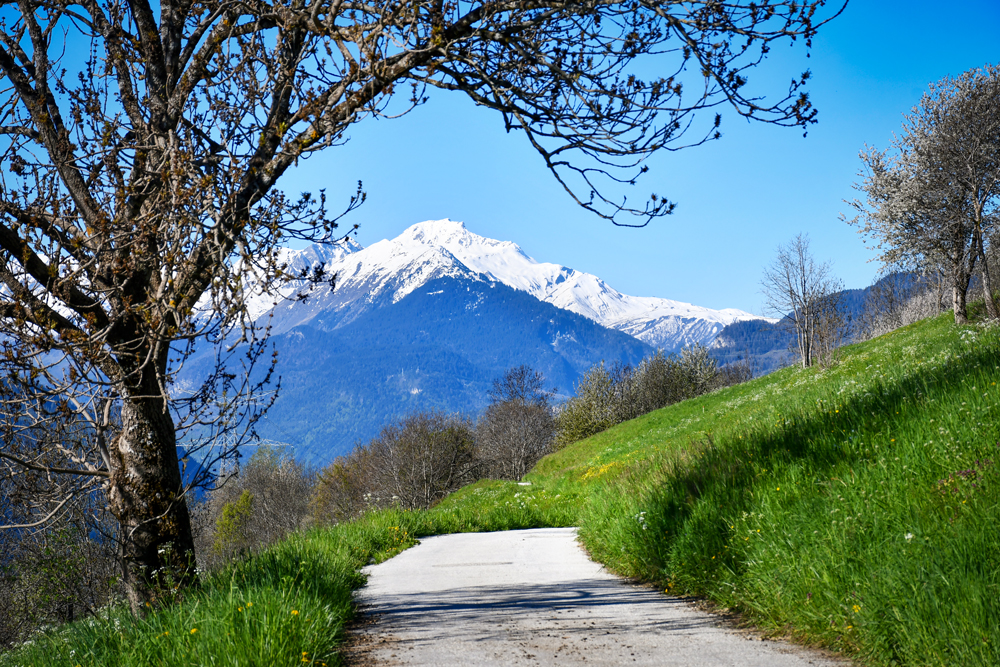
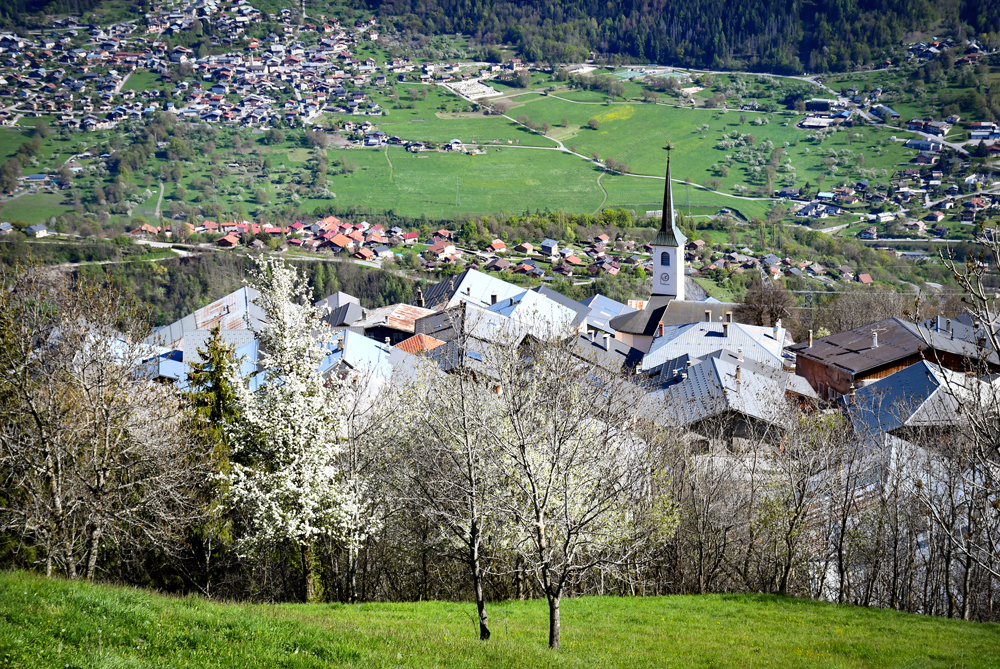





Magnifique, je ne connais la Tarentaise que l’été, à voir tes photos en automne ce doit être magnifique aussi !
Merci pour ce merveilleux partage.
Bon weekend !
Merci Martine ! Oui, en fait j’ai beaucoup aimé découvrir la Tarentaise au mois de juin (fleurs incroyables) et en octobre (temps magnifique) !! L’air est plus “clean” ce qui permet une meilleure visibilité des sommets !
Pierre, this is such a spectacular part of the country and your photos are stunning! Thank you for bringing it to us, especially as some of us are not yet able to see it in person.
You’re welcome, merci beaucoup Ellen! 🙂
An area full of wonder! Thanks Pierre.
My wife and I tend to like visiting mountain areas in the Spring when there is still lots of snow on the mountains—-for example, late May in the Canadian Rockies of Alberta. What part of what months in Spring would you recommend for this area where Spring has arrived but there is still lots of snow on the mountains? Early May?
Repondez en francais ou anglais svp.
Bonjour Richard! Yes, it is a beautiful place to visit in France – particularly if you like mountains!
To answer your question, it all depends on the weather, so every year is different. But to generalise, it is often possible to find snow from 2,000-2,500 meters of altitude until May. With spring coming to the valley from April onwards, the contrast with the still snowy peaks is magnificent.
So beautiful. Magnificent interior and exterior photos. Thanks Pierre
Thank you Jennie!!